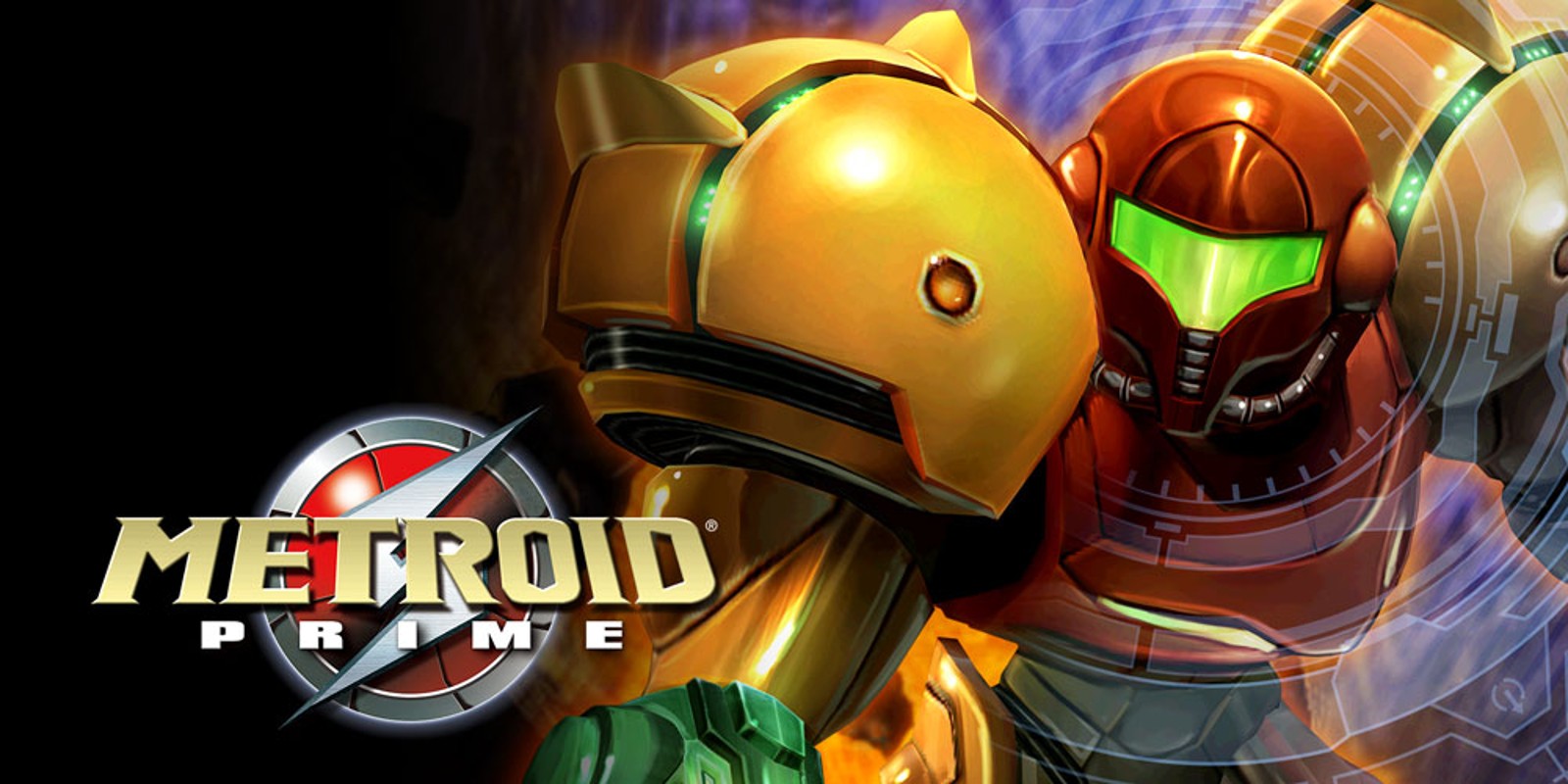
Mythinks #7
The Last Metroid #4 - Metroid Prime - Samus Had a Solid Transition to 3D

A lot of long-running series had made their move to the third dimension in the late 90s. Mario did it, Zelda did it, Sonic did it. And I know this is only a self-appointed trinity I've arbitrarily given, but to me, Mario, Zelda, and Metroid are just kind of in a holy trinity of "Retro Nintendo series" in my head. Ergo Metroid's absence from the whole fifth generation of gaming feels a little odd. Samus' only playable role, let alone appearance at all on the N64 being her slot on a roster in some obscure crossover fighter nobody's ever heard of.
Not that Metroid's attendance mark is devious or anything. Just apparently there was never a Metroid 64 because they couldn't come up with an idea for how to move Samus to 3D. Which, sure, don't force it and all that. I wasn't even a Metroid fan yet at the time so it's not like I had to wait.
Eventually, the task of giving Samus her Third-Dimestrogen would fall on an American dev by the name of Retro Studios, and their first round on the idea perhaps wasn't the most adventurous. Turning Metroid into a third-person shooter version of Super Metroid was fitting, but not surprising. But apparently ol' Miyamoto himself made the suggestion to move the perspective into Samus' helmet, making it a FIRST person shooter version of Super Metroid. These days that probably seems like a no-brainer, that's almost the most common type of shooting game anymore, but for the early 2000s, the concept of a first-person shooter was still decently novel. Especially for one that was more about exploring a Metroid-style world.
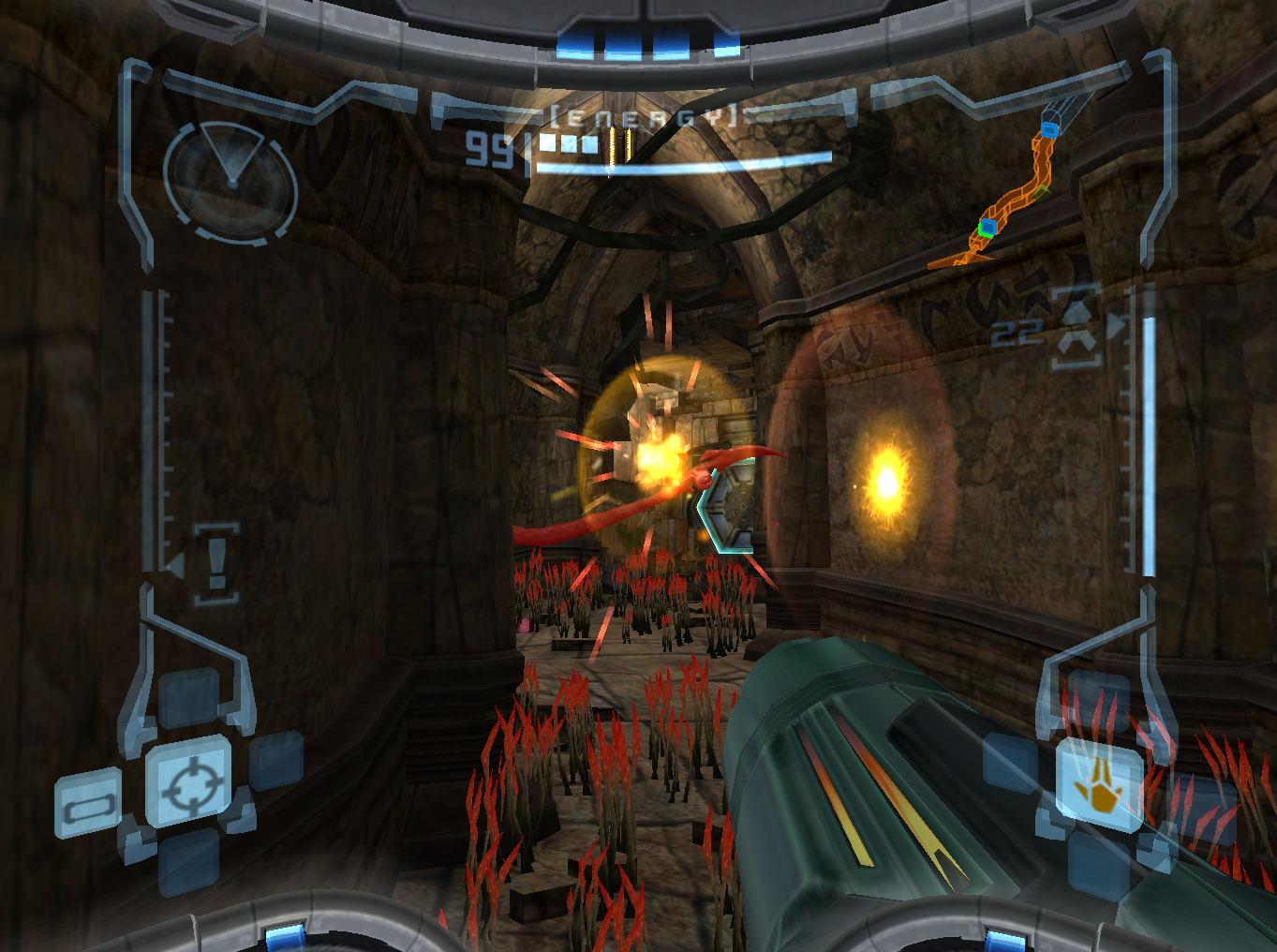
History preamble aside, Metroid was certainly a late bloomer when it came to making the obligatory move to 3D, but I certainly think it made a pretty powerful splash into it, one that, fittingly enough to me and my made-up Nintendo religious analog, rivals that of Mario 64 and Ocarina of Time. But it is still a decently large occasion, since Metroid is one of Nintendo's core series, so them handing the rights off onto another studio, a foreign studio at that, was a bold move at the time. There probably is an instance of them doing that before this, especially with all the weird little one-off Mario games out there.
Apparently what was Metroid Prime's explicit stated goal was to, at least in essence, make Super Metroid, but in 3D. Not as in a 3D remake of Super Metroid, but as in trying to translate the vibe, scope of the world, and its focus on exploration and uncovering secrets. Did it accomplish this? Yeah! I'd say it got at least 80% of the way there. Though let me tell ya, I took this little tidbit and ran with it in previous versions of this article that I eventually scrapped entirely, thanks to incessantly comparing and contrasting this game to Super Metroid, which got annoying on rereads, so I just deleted the whole thing and started over. Not that I'm swearing off of that, but I also think holding any game up to a game held to golden regard is a recipe for tearing something to shreds when you don't mean to.
The Prime games I would very much consider my home, when it comes to Metroid. Prime 2 was my first game in the series that I've played, getting Prime 1 almost the instant I beat it. And silly enough, ol teenage me thought 2D games were dumb and antiquated (unless it was Kirby), so after Metroid NES instantly turned me off of playing the rest of the 2D Metroids, I bounced. Whoopsie. Either way, this is a subseries that's close to me.
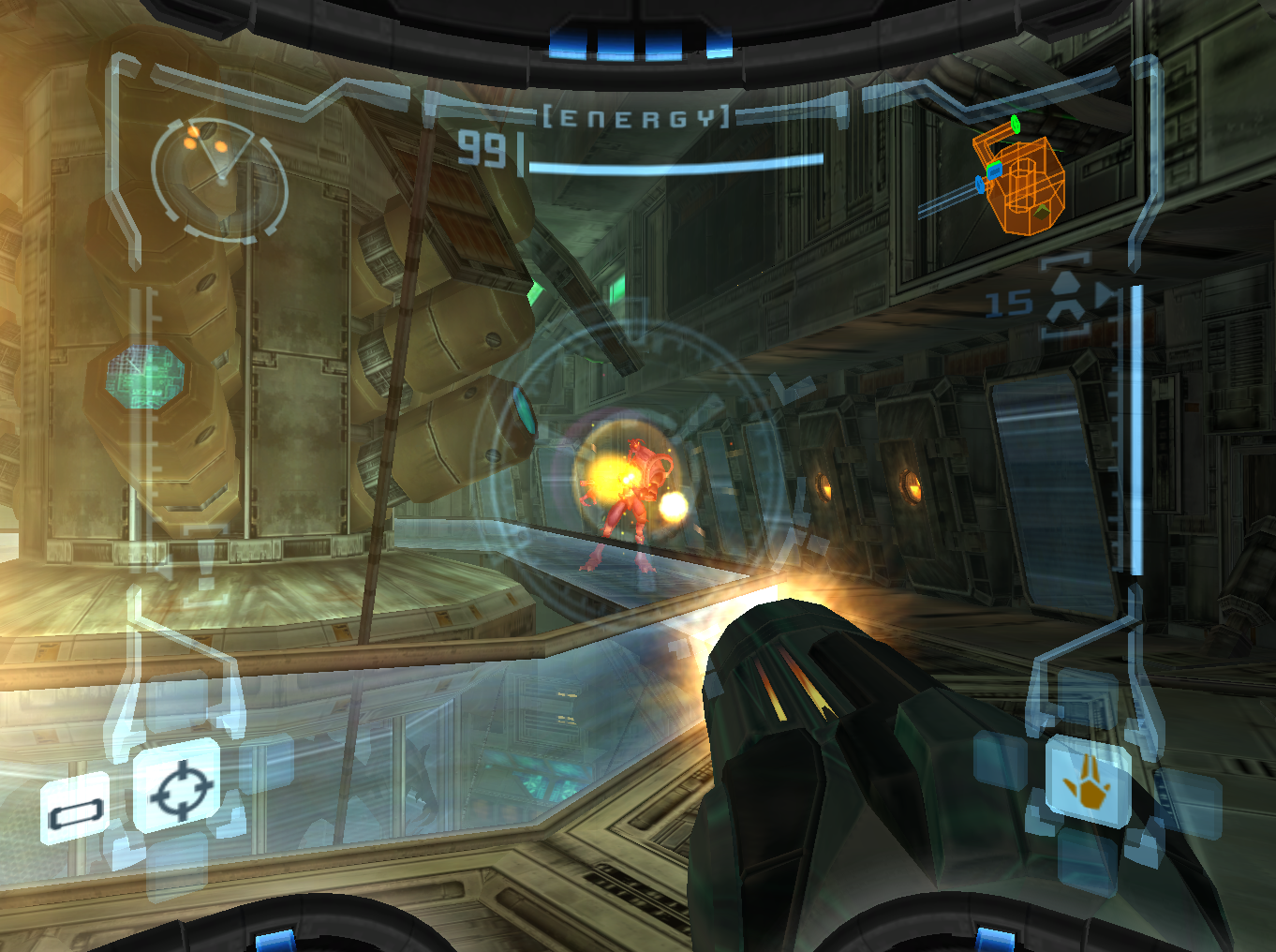
Prime starts with a decently lengthy intro sequence, one that feels like it purposefully echoes Ceres station back in Super. It's a space station that let out a distress signal that Samus caught, the thing is ruined and in pieces by the time she arrives, you fight a big boss in the core of it before defeating said boss triggers an escape sequence. Ridley's there. And this is an area that TECHNICALLY becomes permanently inaccessible once you escape from it, as you land on the planet afterward. And I can snap this comparison's spine by saying the Parasite enemies are like the babies of the Queen Parasite, ergo, The Baby(s). Either way, even in retrospect, I can very much see this game setting you up for the idea that this is their take on what Super Metroid in 3D would look like, it's not particularly subtle about it.
And as a tutorial area, it's quite effective. There's not much in the way of exploration to be had here, mainly the game worrying about getting you acclimated to the controls. Especially since, again, this was when first-person shooters were barely out of being called "Doom clones." And because this is an era before genres got homogenized into an indistinct mush, this game's control scheme is actually decently different from what you're probably used to with FPS games. Rather than concern itself too much with having to actively aim, it immediately gets you used to the idea of locking squarely onto a target, and generally speaking, Samus' power beam is very accurate for its needs. This seemingly done to free up the right analog "C Stick" for another purpose that I'll be needlessly coy about because I don't quite wanna get into that topic yet.
If you're used to traditional FPS controls, Prime might take a bit to get used to, with Samus more or less controlling like the universe's most agile tank, only being able to strafe when she's locked on to something. But I think this control scheme is actually more smart than people even seem to give it credit for, at least for the needs of this game. With the C-Stick occupied, (and even then, probably too feeble and nubby to be acting as an aiming apparatus) and the focus of the game being on exploration, the game very much is built around the idea of having a level viewing field all the time. Enemies don't often ambush you from above, getting cheap shots at you from offscreen, the game's verticality not too concerned with blind jumps or expecting you to have an eye upward while you're platforming.

Not to say the game doesn't have any verticality, quite the opposite, actually, it having a lot of huge, cylindrical rooms that seem to echo the big vertical shafts that are all over the 2D games. But you can still look up and down by holding the R button, the only caveat being in plants you in place to do this. But again, given this is a shooter far less about twitch reactions and more about observation, it still works. Metroid Prime isn't really a difficult game, at least not most of the time, nor in the traditional sense of hard-as-nails encounters that nearly kill you, apart from maybe a first playthrough, or playing on Hard mode.
Instead, combat in this game is a lot more about identifying the weakness of an enemy, either through experimenting with your various weapons or having the Scan Visor clue you in. You'd be surprised how many enemies are one-shot with one particular weapon, or are otherwise decently nerfed by it. The charge shot from the Wave Beam is good at stun-locking Space Pirates in particular, freezing something with the Ice Beam and then blasting it with a missile shatters most targets, so-on and so-forth. Getting through on Power Beam alone can be a challenge, as the little peashooter definitely falls behind other weapons in kill speed. But I'll get more onto that when we talk about the weapons on an individual basis.
 VIXI:
VIXI:
There are definitely points where the game gets challenging simply because it can blindside a new player; the entire first leg of your first time visiting the Phazon Mines in particular is a LONG gauntlet with no save stations for a while, fighting tough to kill and hard-hitting enemies the whole way down. All capping off with a miniboss that can absolutely ruin you if you're already bruised and battered from getting there. Especially if you don't have every energy tank you can possibly have up to that point. But it far from feels like anything unmanageable, that's the one part I particularly remember being a good ol Wall back in the day.
-------------------------------------------------------
 JINX:
JINX:
i think the only real friction point i have with this game's combat is that if multiple lock-on targets are onscreen, it can be a mess to lock onto the one you want. like, even if you're looking directly at something, the lock-on can just decide to lock onto something else just because it's larger or closer, and there's not really an easy way to switch which target you're looking at. the r button could've been perfect for this, since it otherwise can't be used in this mode.
-------------------------------------------------------
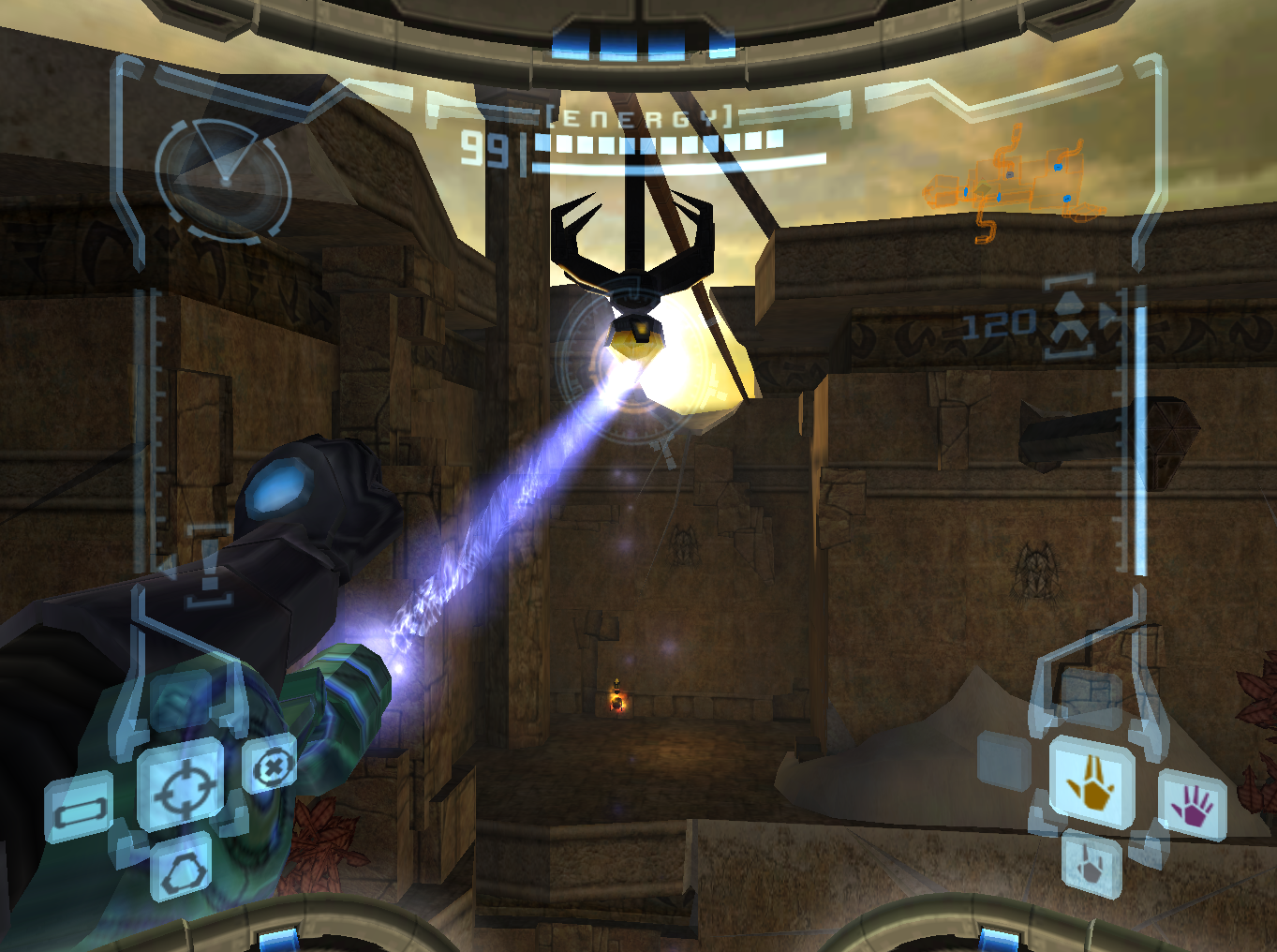
The secret-finding also feels a bit less about getting stumped and blasting every tile you see, but instead being observant about the environment and keeping an ear out for a distinct ambient noise that all expansion upgrades make when you're close. And when you're new to the game, there's nothing more exciting than catching that hum and starting to glance around a room for whatever looks like it can be blasted open or busted down. And in the end, I kind of prefer this method of exploration and secret-finding over how it's typically handled in 2D games. Which is to say, sometimes where they're hidden is a little nonsense. Even if it can still feel fair. Mostly. It just feels more diegetic in the Prime series.
The world's design follows a lot of the same sensibilities as Super Metroid does, always looping back to where it's convenient, but never forcing you into these shortcut looks so as to feel like it's backseat gaming you. I've always seen complaints online about the few times this game forces you into backtracking treks (back trekking), more on that in a second, but I've always liked the way the game gives you a power-up and no clear direction where to take it. But it does so with enough respect for your time so as to not feel like it's forcing you to meander about. A good example of this is when you first get the new ability, the Boost Ball, in Phendrana Drifts. Upon getting this ability, it clues you in that the physical terrain it's most meant to interact with are half-pipes, and it leaves you on that information for a while, for you to remember where else you've seen any half-pipes.
And I think that degree of encouraging you to wander and find secrets on your own for a bit is nice, especially in the way it put the next step in the progress chain deep into an area you've already been in, usually after you've gained a lot of new abilities since you've been there. Sure, the goal it has explicitly for you to find is the half-pipe on the way from Tallon Overworld to Chozo Ruins, but Chozo Ruins also has a couple half-pipe structures to mess with and find secrets in. Not to mention you've also found missiles and morph ball since the last time you've been forced to come back to Tallon Overworld, so that way you'll be likely to find a couple rooms that'll be important for future progress, the entrance to the wrecked ship, and the Impact Crater temple. Both of these rooms next door to the Space Jump you're supposed to be finding on this step to begin with.

I also think this game has a decent hint system so that you'll never be lost for too long. If you take a while to get to the next item the game has in mind, the map screen will notify you of the next point of interest. I only wish it allowed you to explore directionless a little longer before it started signposting where to go next.
And the all the between-area elevators are very convenient. I used to agree with the complaint about the backtracking, because I thought once you got Boost Ball, you had to travel from Phendrana, all the way through Magmoor Caverns again, and then all the way through Chozo Ruins to get back to Tallon Overworld, when there is a MUCH faster shortcut just within Magmoor Caverns itself, that also deposits you not too far from that half-pipe they want you to go to so bad. Which cuts probably twelve minutes out of walking through areas you've already been through before. Same goes for the second cross-country trek after the first Phazon Mines visit to go get Grapple Beam, X-Ray Visor in Tallon Overworld, and THEN Plasma Beam back in Magmoor Caverns. Again, sounds a little egregious since the walk from Magmoor to the Mines is so, so long, no matter if you go there from Chozo Ruins or Tallon Overworld. But lo and behold, I was wrong again, because if you actually explore a little bit, you'll find that there was a path covered in rubble that's destructible with your new, shiny Power Bombs, one that takes you right into the middle of Phazon Mines, saving you half the perilous descent back down it as well. Like, all things considered, this game is NOT that rude about the backtracking.

The only thing I would say IS rude about it is Magmoor Caverns itself. Magmoor is magmoor or less the central hub area of the world, with it connecting to every other zone. Just thing being it does this while being a really, really long hallway that you will be running up and down more than once, with only Grapple Beam and Ice Beam to make that run a little easier and less time-consuming.
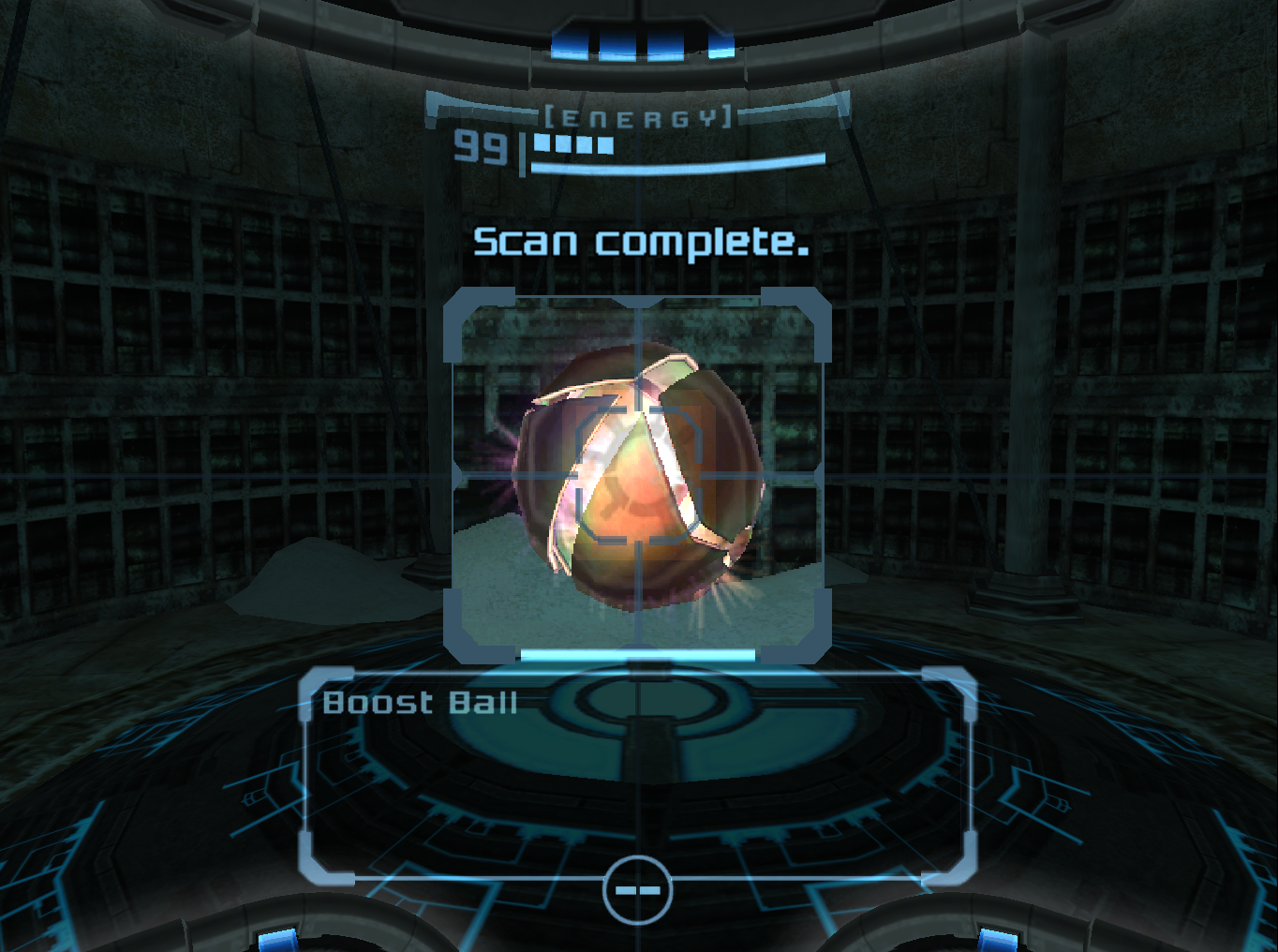
Though I think you'll notice I have mentioned picking up abilities in an "intended order", because unlike Super Metroid, this game is very much rigid about what it'll let you get in what order. And there's not really a way to bust the game open quite the same way wall-jumping or shine sparking can. If you follow the game's rules, you will be getting Missiles, then Morph Ball, then Morph Ball Bombs, then Charge Beam, then Varia Suit, and you're not really gonna be able to deviate from that meaningfully.
Except for one little exploit using your ship's little gravity boost to allow you to get on top of it with just a single jump to leap onto the ledge behind the ship to get the Space Jump early, but even then, this was fixed in just about every post-release version of the game, to my knowledge, so they REALLY did not want you doing it.
This very much is at least a little antithetical to Super Metroid, which is very open-ended in how you acquire items. Especially once it teaches you those two very important tools that you can carry with you into a new playthrough. Here, you're kind of stuck progressing the same way no matter what you do, barring the scant handful of optional abilities. And as much as I can understand this makes the game less satisfying to play on repeat playthroughs, I think this is fine given Prime is very much a different beast in and of itself. And in this house, we do not immediately dismiss linearity as if it's inherently lesser than open-ended.
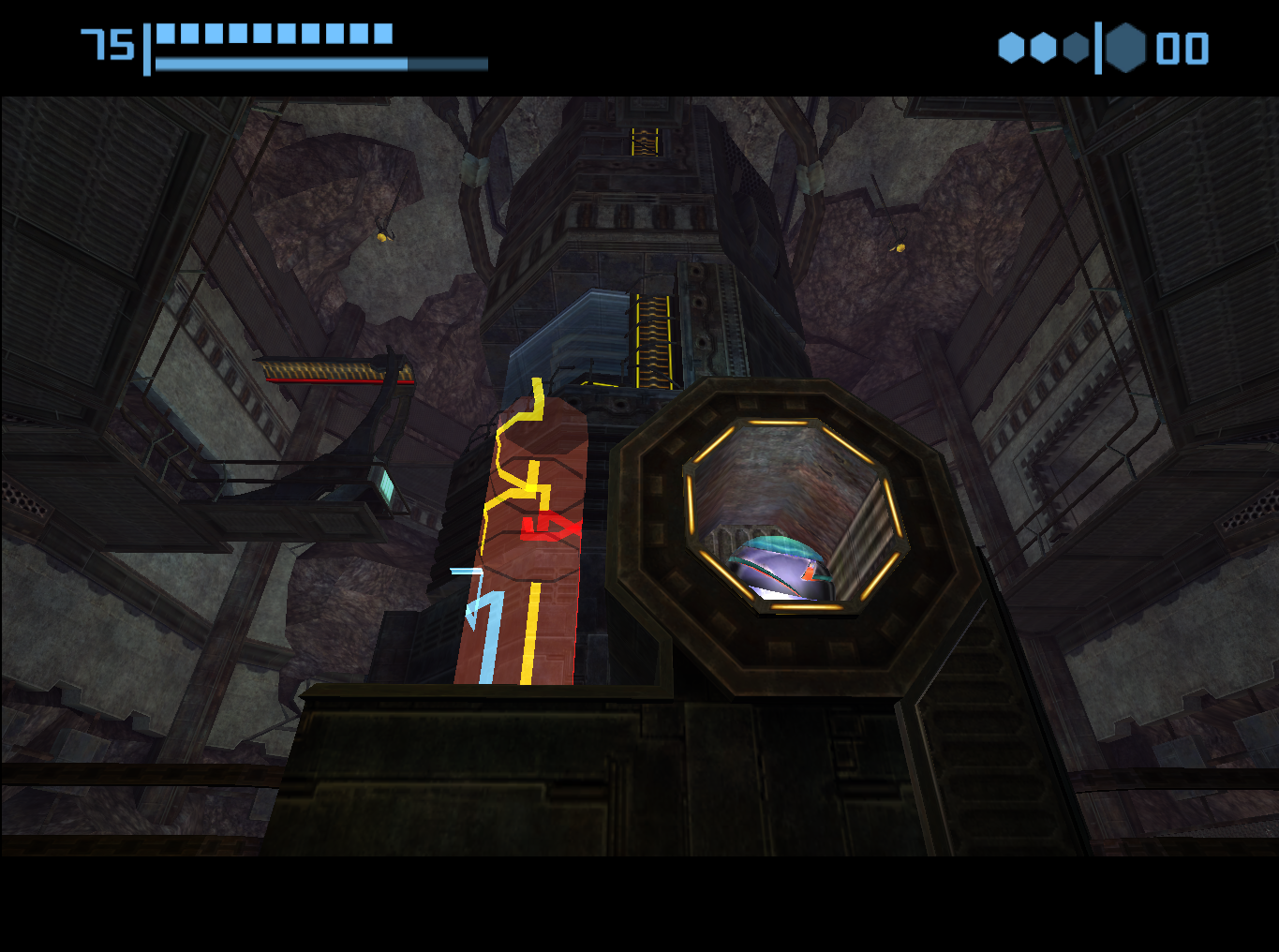
See, I don't really see the Prime games as "speed" games. The Primes are a bit more like 3D Zelda games in terms of their pace and progress line, ergo I think it's fine if this game is a little tighter on what order you do things. Super Metroid you can beat in under 3 hours in what can still be considered "casual pace" if you're good enough. "Casual yet speedy" pace for Metroid Prime is more like 4-6 hours. It's not quite as expansively long, but also not quite a "beat it in a single play session" type game. In that respect I'm okay with it playing out a bit more like a Zelda game. Plus, Prime is a bit more overtly about solving single-room puzzles rather than multi-room maze-like navigation. That and I still think there's plenty of efficiency-routing to figure out, given all of the loops that bring you back to older zones.
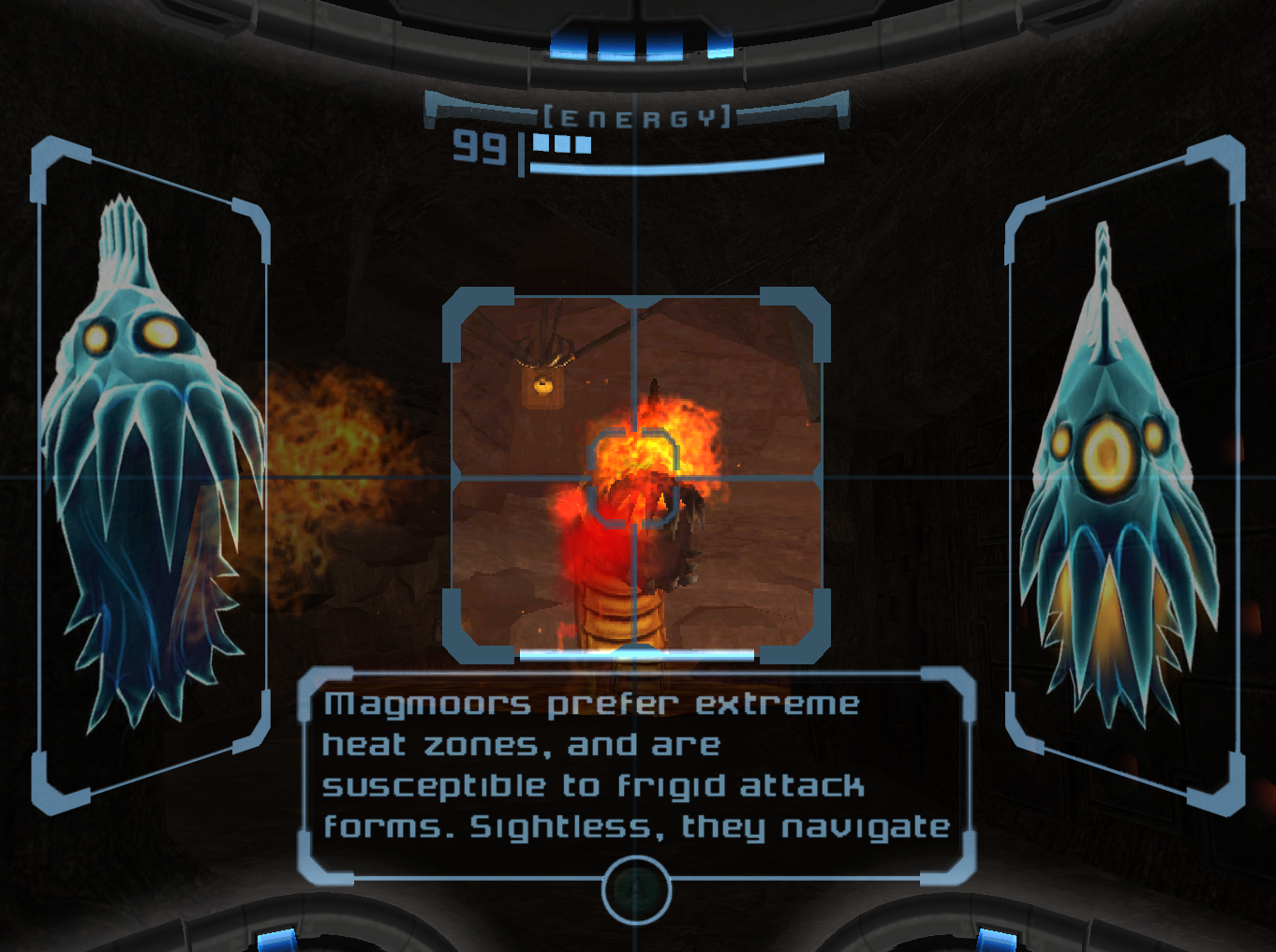
I think this slower pace is also very supported by the inclusion of the Scan Visor, which will become a hard staple in the Prime subseries. This game, by Metroid game standards up to this point, is actually VERY text-heavy, all thanks to the Scan Logs dotted around the world. The Scan Visor is a non-combat visor where your lock-on function becomes scanning a target, quite often allowing you to lock onto objects within the environment that you normally couldn't. This gets plenty of applications, being a key to interface with holographic panels that unlock things like doors or elevators, but its mainly noticeable function is actually probably one of the best ways this game adds to the atmosphere of a Metroid game, by scanning random objects in the environment, which give you anything between little inconsequential blurbs about said object, to in-depth data entries on various "lore" logs and the creatures that inhabit Tallon IV.
Many a random object has text blurbs that exist for nothing but a little flavor, and the log book also tries to square video game enemy behavior into an ecology-shaped hole that tries to make every creature on this planet sound at the very least a little plausible as an alien animal, which is a level of detail these things haven't quite gone before, other than a sentence about it in a manual, or something. If nothing else it can be a fascinating read here and there, at least if you're a sucker for flavor text like me.

The Scan Visor is also the primary vehicle this game does its storytelling through. If you were to do nothing but plow through the game and never read anything, you would probably be one to say this game barely has a story, somehow less than Metroid II or Super, with it just being travelling from point to point to point. But if you aren't weird about deciding not to read anything, you'll come across a number of perhaps retroactively annoyingly named "Lore" entries; whether they be scribes on Chozo ruins walls or data logs on Space Pirate computers. There being two overarching stories going on between these two factions.
Yes indeed, Tallon IV turns out to be yet another planet that the Chozo have colonized. I suppose this time being a little surprising, especially in retrospect, that this particular sect of Chozo very much putting an emphasis on spirituality and achieving perfect harmony with nature, forgoing technology altogether to live off the land and build cities with nothing but the resources they found on this planet. But because Metroid is a series where nobody can ever have nice things, these unlucky hippies got struck with a strange meteor of unknown origin, the meteor bringing with it a highly radioactive substance known as Phazon, the stuff seeping all across the planet and quickly poisoning it until it may one day no longer be able to support life.
 LUNA:
LUNA:
In fact, there's a bit of what seems to be a deliberate misdirect in this story and what you're doing in what you could call the first "act" of the game. The wall carvings talk about a "Great Poison", and the Chozo Ruins you're exploring are filled with poisonous water that hurts just to stand in, eventually finding the source as a big flower boss that has grown in the water's source. It seemingly you're being led to believe this thing is the source of the "Great Poison" being spoken about in the Chozo's recount of events, but shortly after you'll start learning more and more about this "Phazon" substance you may have seen a mention of once or twice, or if you explored enough, maybe even got to see firsthand. It becoming clearer and clearer you haven't actually solved this planet's problems as the Chozo lore entries begin talking about a big temple built above the crater of a meteor's impact (Like some kind of Impact Crater), and some creature nebulously referred to as "The Worm."
All this of course adding to the atmosphere of hauntingly birdman-made places that are also empty, all the little canals and terrariums built but with no one around left to actually make use of them. Things in Chozo Ruins especially taking a darker turn when the very ghosts of Chozo begin haunting the place.
-------------------------------------------------------
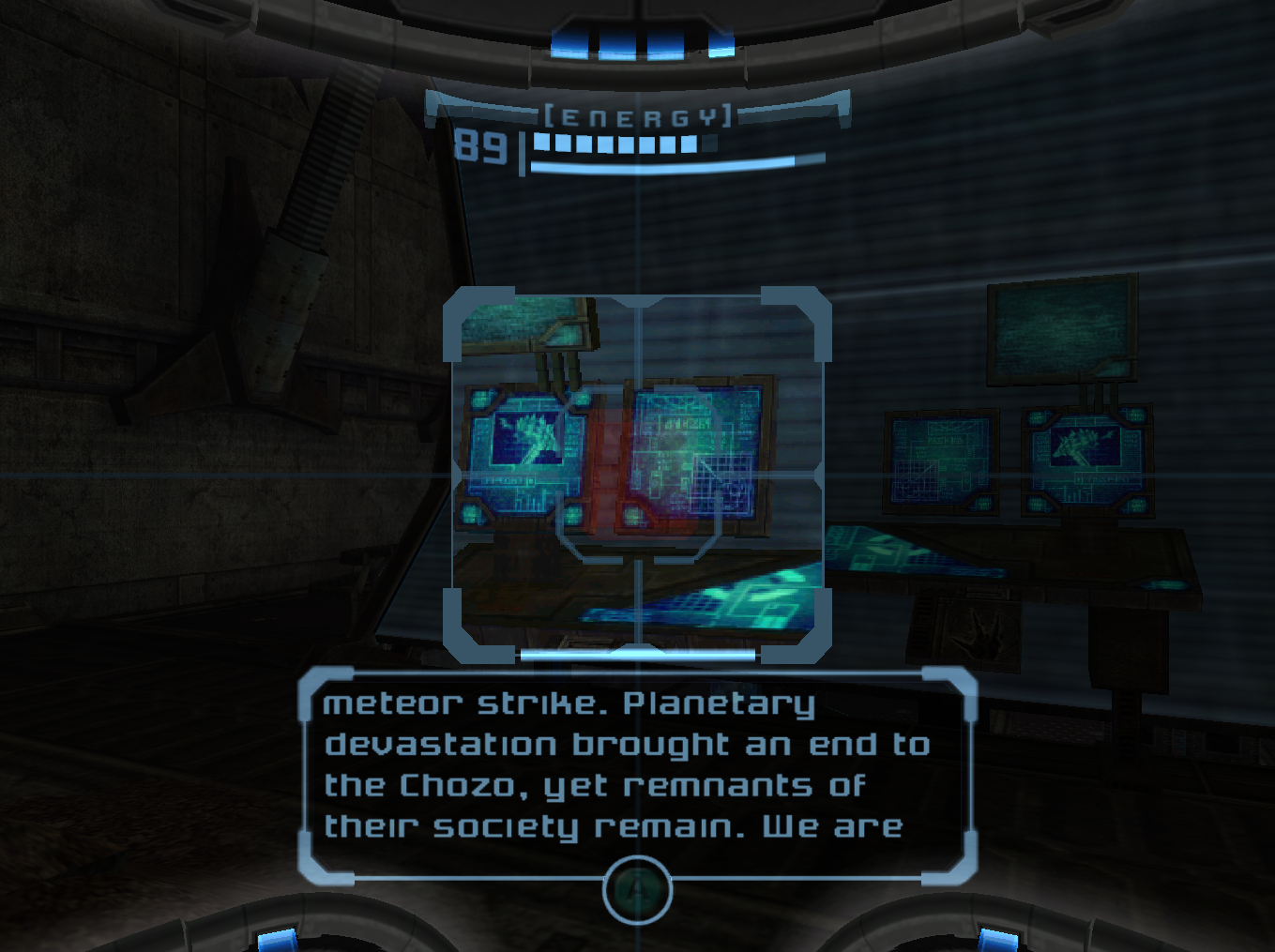
Then you have the Space Pirates, whose log entries often talk about their research and bioweapon development projects, especially focused on this Phazon stuff they just discovered. Additionally, they find the remnants of Chozo society here, frustrated that the Chozo have built a giant protective field around the big evil meteorite that's oozing an ominous substance. Genre savvy, these guys are not.
In fact, it's a little surprising how half-witted the Space Pirates are often portrayed in this game in particular. They're all about science and piracy of course, there's a few spare logs of them talking about random crap they've pillaged and could maybe pawn off on other alien races, but you'll also find many a Pirate log talking about how someone did something stupid and now everyone is in big big trouble, and that they're getting a rations cut and increased unpaid work time. The Space Pirates should unionize, I think.
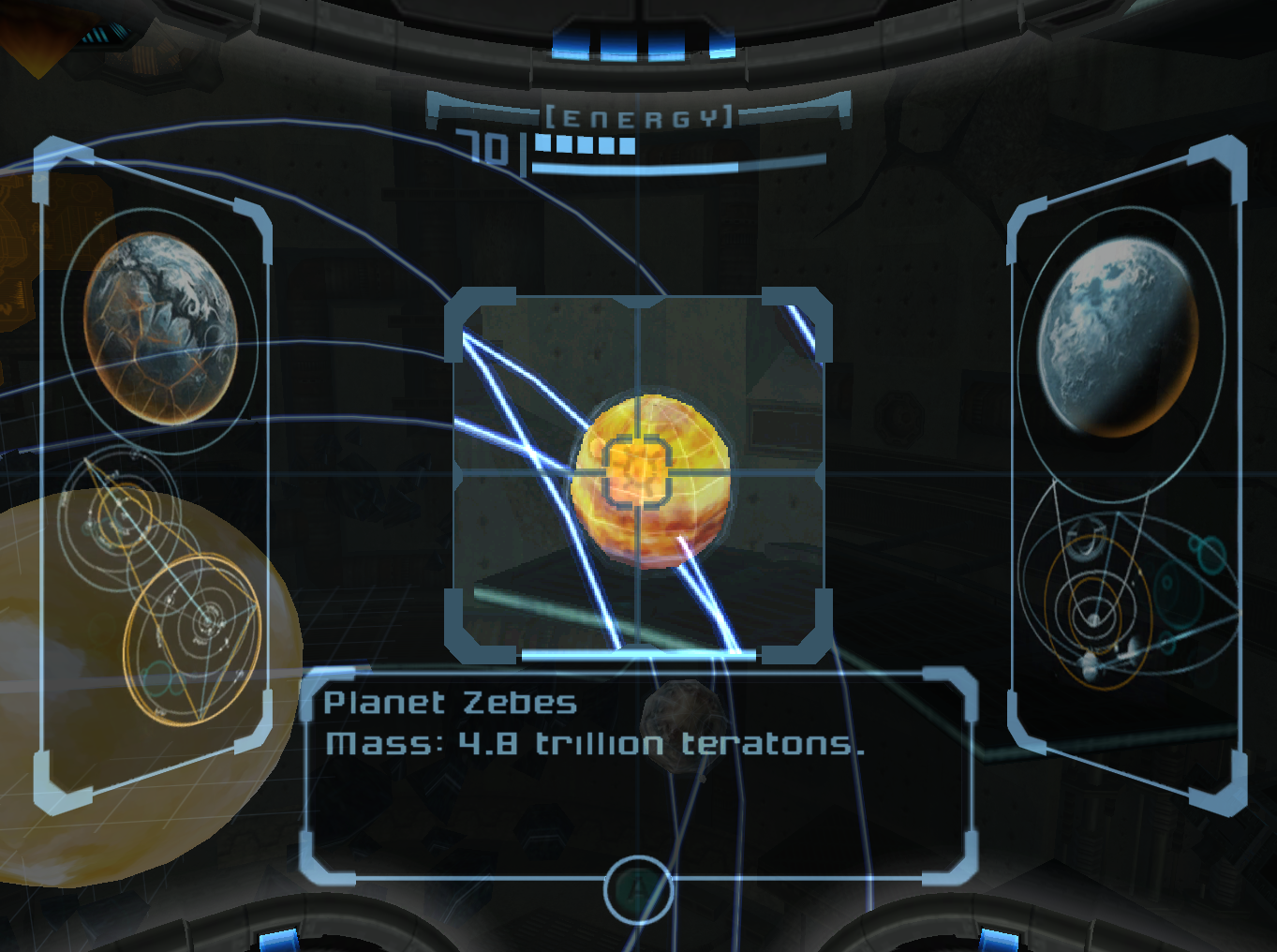
The scan function isn't just some of the exposition, basically the entire story other than what's immediately happening to Samus is in various scan logs. You'll learn all sorts of various useless tidbits that don't actually mean anything to the grand scheme of the Metroid story. Did you know that Tallon IV itself is in the same solar system as Zebes? I don't know if that's ever brought up aside from the planetarium in the Space Pirate Phendrana Drifts base. Busy neighborhood of the galaxy, I guess.
 CHIAKI:
CHIAKI:
\I think the scan function is a stealthily pretty genius way to give a lot more context to what you're doing while still making the game feel very lonely as Metroid games tend to feel. And furthermore, I think it's cool that the actual story content of the game is in and of itself a collectible in a genre already about collecting things. You're put down in this world that's been ravaged by some kind of catastrophic event, but you use your scan computer to piece together the context yourself, and I can't think of very many games that do that that aren't, y'know. Outer Wilds or Void Stranger. Games where putting 2-and-2 of the story together is the whole point.
-------------------------------------------------------
Something the game does very early on is have the Scan Visor directly be the weakness of the Parasite Queen, in that before scanning it, Samus will aim at the body. But once you do scan it, it reveals that its weakness is its mouth, which then moves the lock-on target to its mouth, which deals more damage to it. This being peculiar because I swear this is the one and sole time the Prime games do this. Like, I would swear that'd be more of a thing if they set it up so early.
Another thing of note is that, since this game is 3D-built and not at all tile-based, it can't really reveal any tiles that are destructible by certain weapons. Well, that's another function where the Scan Visor comes in handy, because it can scan certain terrain and reveal what type of mineral they're made of, each mineral being weak to a certain weapon.
But so long as we're talking an extended rant about one of this game's new unique abilities, we may as well finally get into the rest. And it's basically gonna be starting from scratch, since a lot of these had to be changed for one reason or another due to the shift to 3D.
-------------------------------------------------------
New!

Scan Visor:
Already talked at length about this! Duh!

Missiles:
More powerful than a normal shot and has expansions to increase ammo capacity dotted around the world, as usual. But Missiles in this game are actually a lot slower, and have a much slower fire rate. Though I think this is to make up for the fact that one or two missiles will take care of most enemies from the early to mid-game. They also now have the ability to home onto their target, if you fire them while locked onto something.
However, thanks to a little quirk with the way the animations work, you can cancel the Missiles' "reload" animation by simply pressing A to fire your beam immediately after firing a missile, which will switch your arm cannon back to "beam mode", allowing you to fire another missile much faster. Despite this being much easier to exploit, it's been left in later versions of the game, unlike the gravity jump exploit from earlier. So I guess this they're fine with?
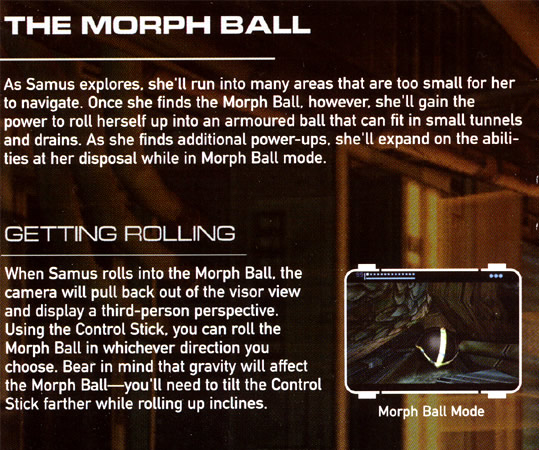
Morph Ball:
Morph Ball in large part does what you think it does. But now in 3D. But the interesting thing about it to me is how it'll actually change the game to a 2D perspective in certain rooms, almost kind of turning it back into a 2D Metroid for very brief spurts. Though naturally, thanks to the environment of Metroid Prime being visually less video-gamey, you'll have to look out for holes more as they can occasionally be a lot less obvious to stop than when a 2D Metroid wants you to crawl. Funnily enough, this also pulls the perspective out into a more 3RD person view, so no finding out how Samus perceives the world around her when she's a ball. Unless this IS somehow still her POV.
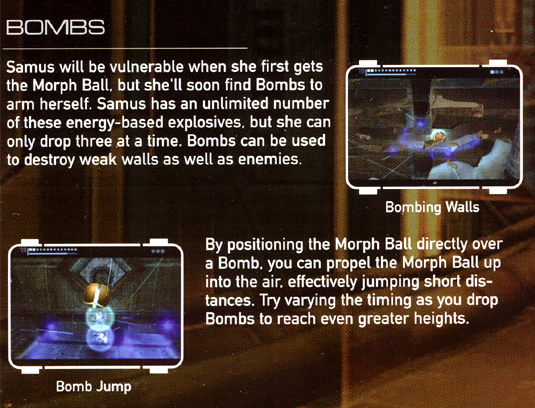
Bombs:
Bombs haven't changed much in the move to 3D, though it feels like their jumping capabilities are used more in this one than it is in previous 2D Metroids. To a point where they expect you to do two bomb jumps in one to gain extra height as a mandatory thing for some collectibles.
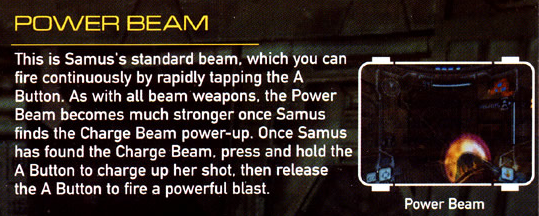
Charge Beam:
Another one that's. Yeah. It charges your beam. Surprise. Though thanks to the Power Beam being a bit of a peashooter, charge shots have a bit more impact. Plus, they'll be useful for a new category of ability.
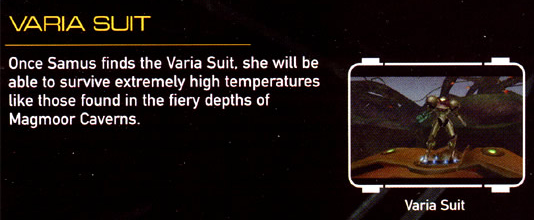
Varia Suit:
Unsurprisingly, it gives you heat resistance and extra defense. Not all of em can be noteworthy.
New!
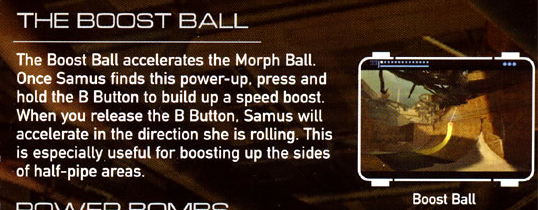
Boost Ball:
Finally, our first completely new ability! One that I'm surprised hasn't made its way into the 2D games yet, as it wouldn't feel that out of place in them. Either way, Boost Ball allows you to charge while in Morph Ball form, and then release to get a boost of speed. This can be useful for tricky and stylish travel, but more prominently, it's used to scoot over crumbling platforms quicker than they can fall out from under you, and you can chain boosts together on a half pipe to keep gaining more and more height. Easily Prime's coolest new addition, at least conceptually.
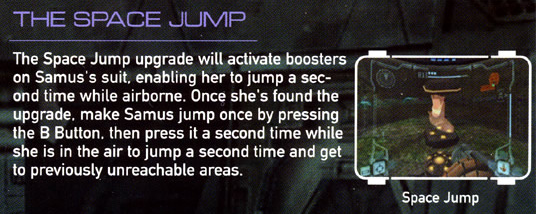
Space Jump:
This one works very differently from the main 2D games. There, Space Jump is basically infinite jumps so long as you keep the timing right. Here, it's very simply a double jump. Bit of a downgrade, but perhaps understandable, as infinite jumps would be very easy to break a 3D game with.

Wave Beam:
Alrighty. So previously in Metroid games, when you acquire a new beam weapon, it either overwrites or adds onto your current beams. Here, they're completely different weapons that you can freely swap between, each one with various applications both in and outside of combat. Where Power Beam is your basic "Small damage but with a reliable fire rate", Wave Beam is notably slower, both in projectile speed and in fire rate. To a point where I do think Power Beam still outdoes it in DPS, but it does make up for it a bit by having all of its shots home onto your lock-on target.
On top of that, its charge shot stuns enemies that are capable of surviving a hit, though notably certain enemies are immune to this. But for enemies like Space Pirates, this does make them easy pickings since it's quite easy to charge up another shot while they're stunned and simply stunlock them until they're dead.
ALSO on top of that, Wave Beam is used to shoot energy conduits, little spots in the environment that'll power machines and doors. And that's relevant with...
New!

Thermal Visor:
On top of swappable weapons, easily another genius addition Prime does is Visors. At least conceptually. In practice, they simply highlight objects and enemies you can't see with the naked eye and that's about all they have going for them. The Thermal Visor in particular allowing you to see the heat signature of the world around you. Some enemies read as "hot" and very easily visible. For some reason, mechanical enemies like turrets are so dark they're practically invisible with this visor, even though you'd think they'd be running just as hot, if not hotter than any flesh-haver would. I guess the Metroid world just has very efficient cooling. Whenever it's convenient, anyway.
It does have nice and funny touches here and there. If you have the Ice Beam out, your arm cannon turns a lot darker. You can turn it on anywhere in Magmoor Caverns to flashbang yourself. That's kinda funny.
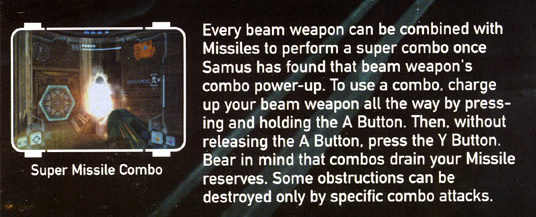
Super Missile:
Technically you grab this before Thermal Visor, but this way just flowed better. Plus, you CAN skip Super Missile on your way through Hydra Base and pick it up on the way out instead. For some reason.
Anyway, Super Missiles work differently from Super Metroid. Here, instead of having their own ammo system, they are part of a new mechanic called Beam Combos. When you charge a beam, and then press the missile button while still charging, you'll eat five missiles to then fire a super-charged blast that will one-shot just about anything short of an Elite Pirate. VERY powerful, just a little slow to use.
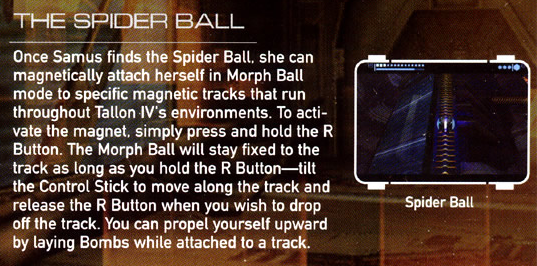
Spider Ball:
Another ability that very obviously had to be nerfed in its 3D debut, because how in hell could you balance total free reign to climb the walls in 3D space. Instead, you'll only be able to Spider Ball along magnetic tracks in the world. A bit less fun than unrestrained wall and ceiling-climbing, but understandable. Though I think it's funny how much this ability will now basically find a home in the Prime series more than it has in the 2D games it actually debuted in.
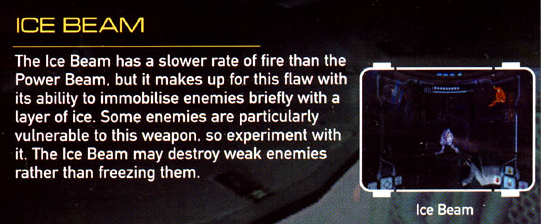
Ice Beam:
The next beam weapon you acquire is Ice Beam, and in this game, it sucks on its own. But for good reason. It has an even slower fire rate than the Wave Beam, doesn't do that much damage, but what it DOES do is freeze whatever it hits. Provided you whiff 3 shots first, but it's still worth it if you manage to hit it, since you can shatter most anything you've frozen with this weapon with a missile. Pirate troopers. Air pirates. Even the dastardly Ice Pirates that are normally immune to missiles with shatter into a million pieces. Neat!
And its out-of-combat application is... opening white doors. Yeah a bit lame, there. Especially since Ice Beam previously had the reputation of being the most utility-based beam upgrade.
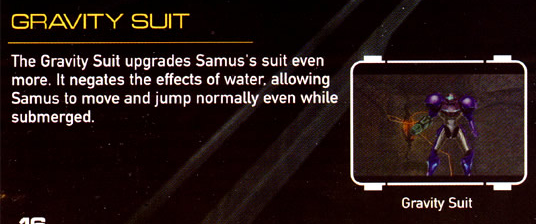
Gravity Suit:
Gravity Suit also returns, and it too does what it normally does in freeing up your movement in water. Though in this game, they barely have you interact with water until you basically already have it. Water's mostly just there to gate off access to the wrecked ship. Huh, sounds slightly familiar.

Power Bomb:
You get these much later than in Super, and it feels a little more appropriate that way. Though in this game, it's less of an exploration tool, since that's mostly thanks to your scan visor and the ambient noise upgrades made. Here, it's mostly a key, which once again feels funny for such a powerful weapon. Though you can definitely use it to just blast a room and get rid of most enemies.

Grapple Beam:
Instead of whole ceilings of grapple points, you'll now usually see, at worst, chains of single grapple points that you can now lock onto, AND will use automatically when locked onto one. So THANK YOU for the far more reliable and easy to use Grapple Beam, Prime.
New?
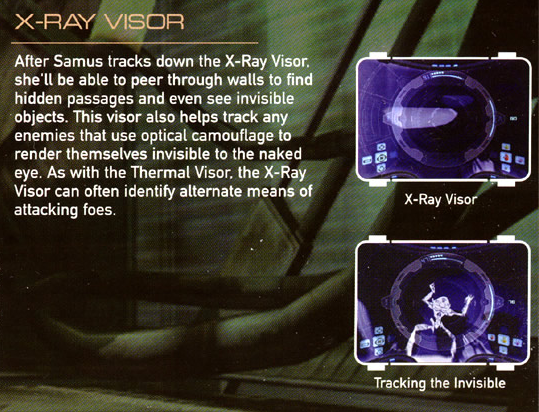
X-Ray Visor:
Sort of new? By name? But still kinda not new? The X-Ray Visor works a bit like the X-Ray SCOPE did; revealing when walls and objects have something hidden behind them. But also it can reveal invisible objects. Like big, metal platforms. Sure, that makes sense for an X-Ray vision visor. But it will also reveal... ghosts? Things that notably... don't have bones? Or physical forms to begin with? That's a weird one. If anything, I would think the Thermal Visor would be the thing to reveal Chozo Ghosts more clearly, since using heat signature vision is a ghost-hunting staple and all. Just have them appear as ice cold pitch-black blotches. But I digress, I guess X-Ray Visor had to be used for something else, too.
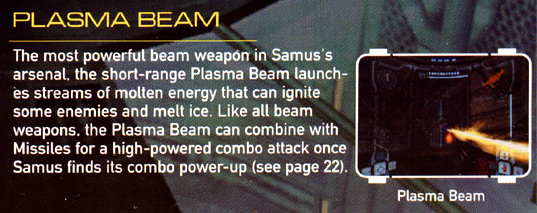
Plasma Beam:
This is Plasma Beam by name, but it's very different in flavor, as it's a lot more overly a Heat Beam. A Microwave Beam, with how much this just melts everything. This Beam weapon is perhaps a little busted. Definitely brought in at a point where your default weapon could use a bit more firepower already, as it has a decent fire rate, deals a lot of damage in a straight line with a very fast-travelling beam, AND it'll also catch targets on fire, dealing, with how much damage this weapon deals, a frankly unnecessary DOT effect.
Its out-of-combat application is, predictably, melting ice. Hey, this thing's already taking over your Power Beam as your new default gun, it doesn't need to do much else.
New!
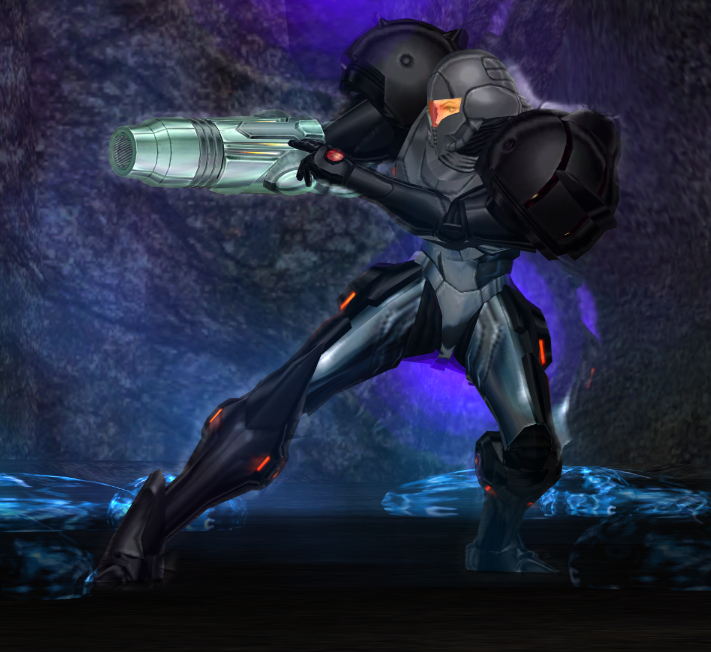
Phazon Suit:
A completely new Power Suit, and we haven't even discussed Phazon that much yet, but the Phazon Suit is mayhaps a liiiiittle underwhelming given how cool and slick it looks, just giving another defense boost and making you immune to the hazardous Phazon substance. Which, outside of Phazon Mines, there isn't that much of, just lying around. And the area leading into the endgame just has Super Phazon that deals damage to you anyways, so.
New!

Wave Buster:
At any rate, Super Missiles weren't the only Beam Combo! These three items are the only real optional abilities, as add-ons for your three additional beam weapons. With this, when you charge the Wave Beam and then fire missiles, it'll eat a big chunk of missiles and then shoot an electric current that deals a constant stream of damage to whatever you're attacking, all while sucking a few missiles a second. Easily the beast of these beam combos, though Super Missiles already almost felt like overkill and eats up way less missiles, so. Most this thing is useful for is chewing through the final boss' HP.
New!
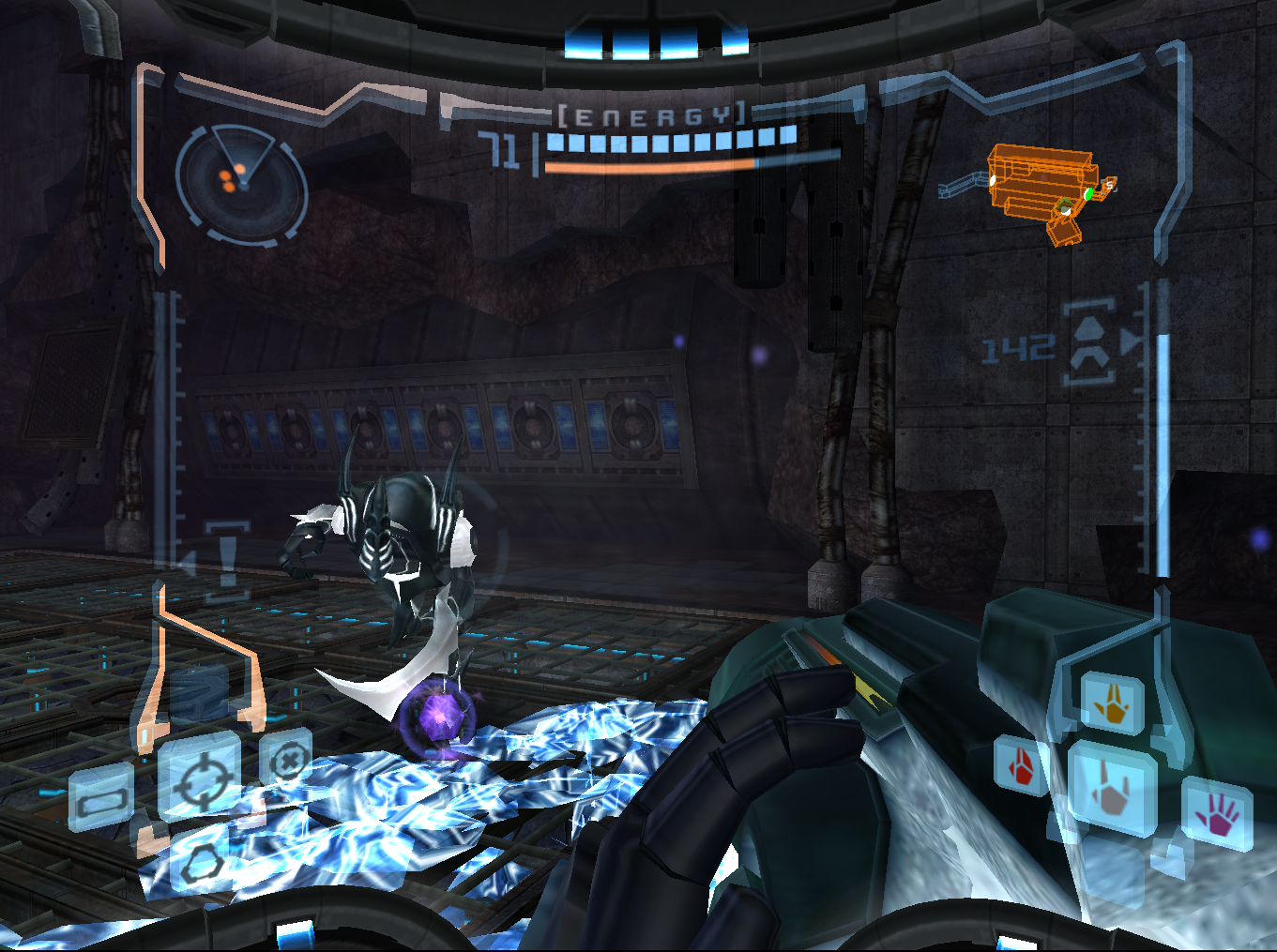
Ice Spreader:
The Ice Beam's Beam Combo is the rather underwhelming Ice Spreader. Conceptually devastating, as it'll spread ice over an area where the shot made contact and freeze everything in a circle around it. But the area is so small and it eats about 20 missiles to do this, which is less than had you just done the old freeze-then-missile dispatch trick. Not to mention, by the time you get this, you probably have Plasma Beam anyway, which just about replaces the need to do this Ice Beam trick for anything that isn't an Ice Pirate.
New!
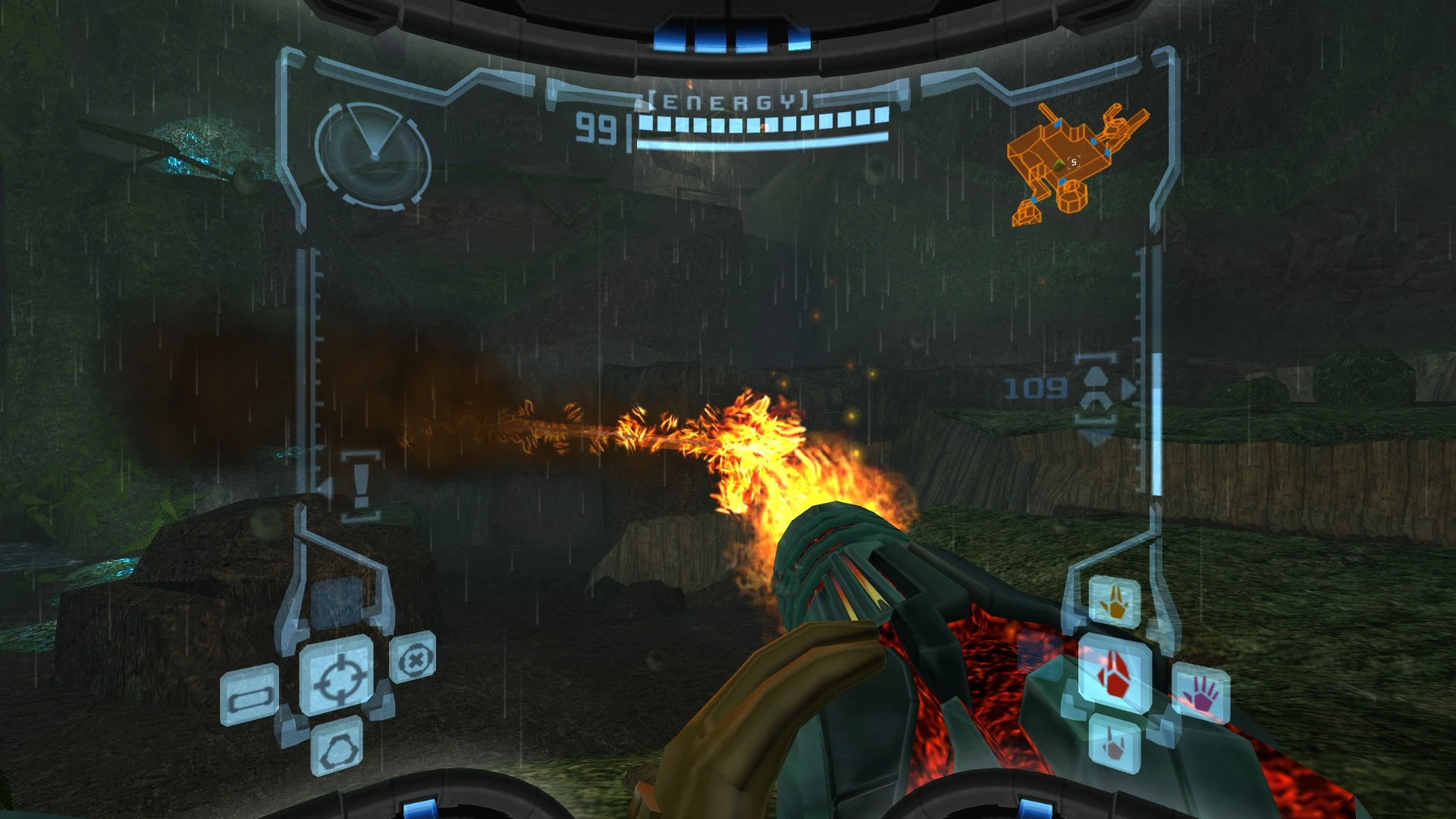
Flamethrower:
Gonna be real, I might have used the flamethrower once. Ever. Maybe twice to see how it'd fare on the final boss. It's a little similar to the Wave Buster in that it shoots a stream of flame forward, but it doesn't latch onto a target, and I don't know if there's a significant DPS difference between this thing and just zapping them with the Plasma Beam normally.
Overall a pretty solid lineup of abilities and weapons, only really faltering by the end there. If it didn't matter for 100% completion, I might just leave behind the other beam combos. Even if it means missing out of Wave Buster, since it's easily the most obtuse one to get to. They must know it's the best of the three. One thing definitely missing from the lineup is more unique ideas, it's got a few stand-outs in Boost Ball and the Visors, but the latter are still mostly conceptually cool and less executionally cool, apart from some spiffy visual effects.
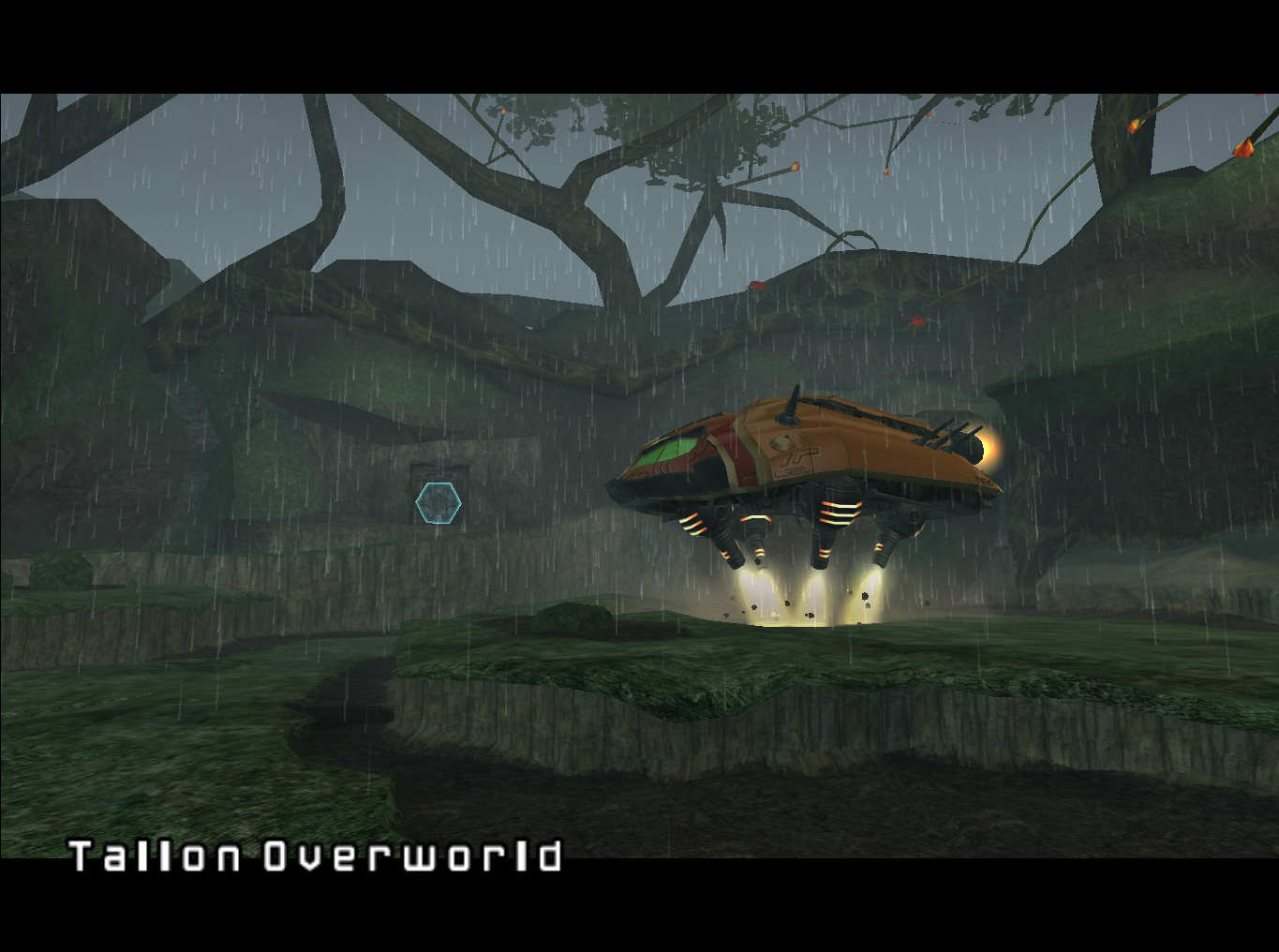
Speaking of that, everyone makes this take but it bares repeating that this game holds up remarkably well, visually. Back in 2002, this was already a visual beaut, with this coming relatively fresh off the N64. But I do feel like Prime is the ultimate example in how even for games with "realistic" graphics for their time, you can still stylize them in a way that makes it feel timeless. It probably helps that this game barely features any humans, only catching glimpses of Samus' face here there, but it's still pulling its weight with loads of moody dynamic lighting, it looking very nice when beam weapon shots light up a dark room.
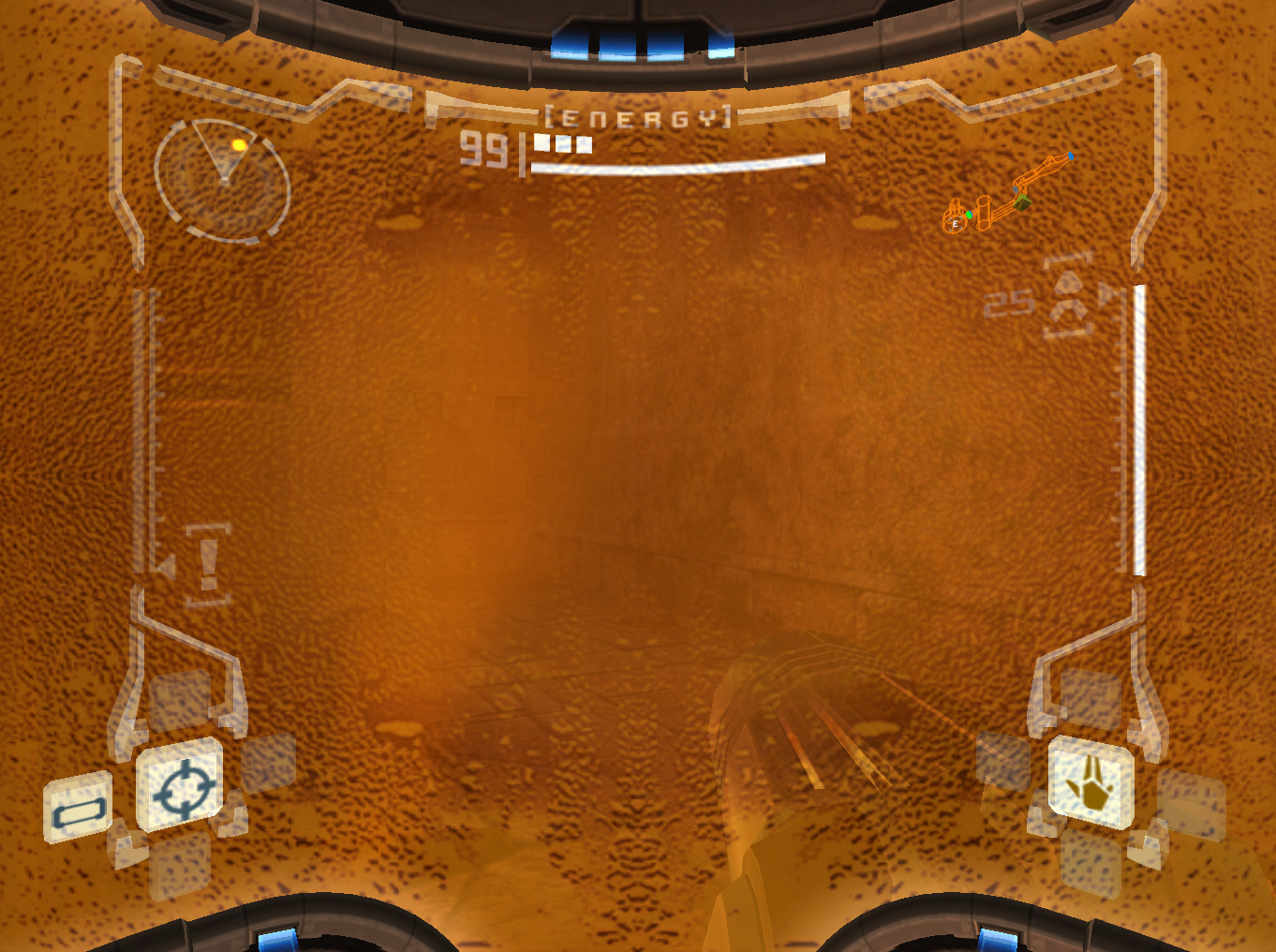
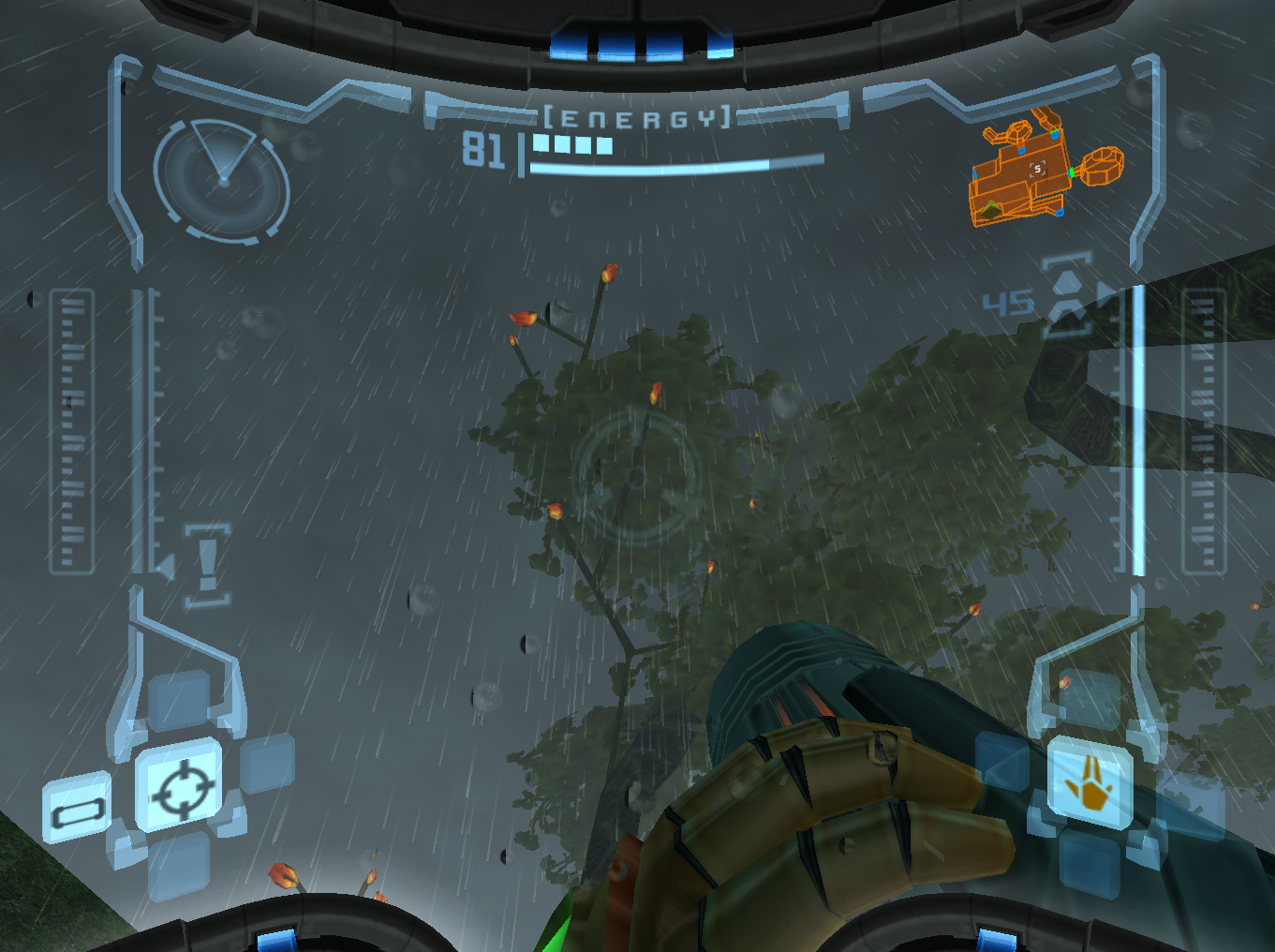
And what helps it feel like an extra-nice production is just how many visual touches are in the game. They didn't slack on the fact that the game takes place from Samus' point of view, with how many visual effects mess with your vision in one way or another, and it works so well to make it feel just that extra little bit immersive. And they will make you look at it. They quite literally shove it in your face. Leaked steam pipes will fog up your visor, rain drops will trickle down it when you look up in Talon Overworld.
And on top of that, some enemies will actually interact with the fact that you have a cybernetic suit, with various enemies that cause electrical interference in one way or another, causing your vision to fuzz with white noise, and you'll even briefly see your HUD vanish and re-appear when the interference gets intense enough, like the suit's helmet display had to shut off and reboot itself. It's just that extra layer of care that makes the first-person perspective feel like a very informed, conscious detail, making the game interface just feel like a bit more of a natural extension of yourself. Makes you feel just a bit more at one with the atmosphere.

Not that it's necessarily a contest, but this is very much the Metroid game with the thickest, most moody atmosphere to it. Maybe the environments are a little less outrageous and alien, the world of Tallon IV is very familiar in terms of its biomes, with a rainforest level, a ruins level, a lava level, and a snow level. But I still think it plenty sells the mood, with the way the world is just rendered so gorgeously yet so dark and dingy in a lot of places. Chozo Ruins especially having a bit of a haunted air to it. Which is probably good because. Y'know. The ghosts.
And as per usual, this is in large part thanks to the game's soundtrack, which has a fair mix of memorable tracks as well as a number of heavy ambience ones that really set the mood, especially for the game's more off-putting moments. You've probably heard Phendrana Drifts before, even if you've never played this game. So instead, I'll go ahead and highlight the music for the Phazon Mines, which as always stuck out to me as a very great foreboding track, definitely befitting the significant bump in danger here.
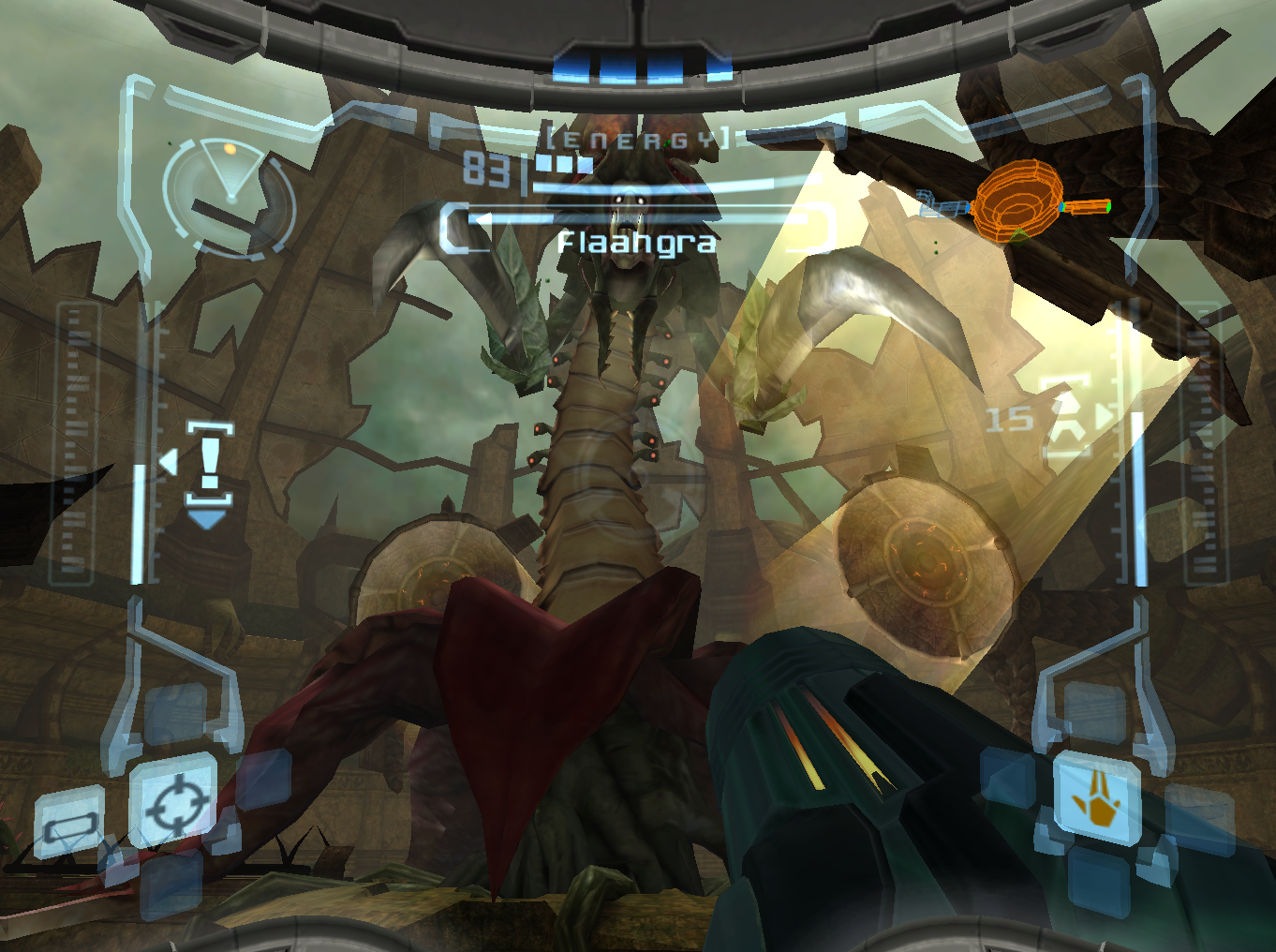
One department, though, that I definitely think this game drops the ball in is the bosses, where just about each of them is a dud in their own way. Not that this series has ever had bosses be a highlight, but at least then, boss fights took about a minute to shove out of the way. Here, fights are overly long, overly repetitious, and are painfully slow in their pace. Like, to a point where it's a decent detractor from the overall experience.
I'll spare Parasite Queen since it's the first boss, and is the only fight that's at least over quickly. Flaahgrah, on the other hand, can be very slow on a first run especially, with four phases only really escalating in how many of the sun dishes you have to knock out, but they also make it so Flaahgrah can knock those sun dishes down again, so you gotta run in a circle, try to stun it before it does anything, keep running, stun it again, it is painful as a first real boss fight and can end up lasting forever.
One thing that can make it easier, though not by that much, is by using the R-aiming to fire missiles at the panels you have to shoot to knock those sun dishes out of the way. It can be precise, and of course, Flaahgrah isn't just gonna stand there and watch you do it, and it isn't fool-proof. And I'm pretty sure the maximum missile count you can have to this point is 20, so you only have so much margin for error when doing this strat.
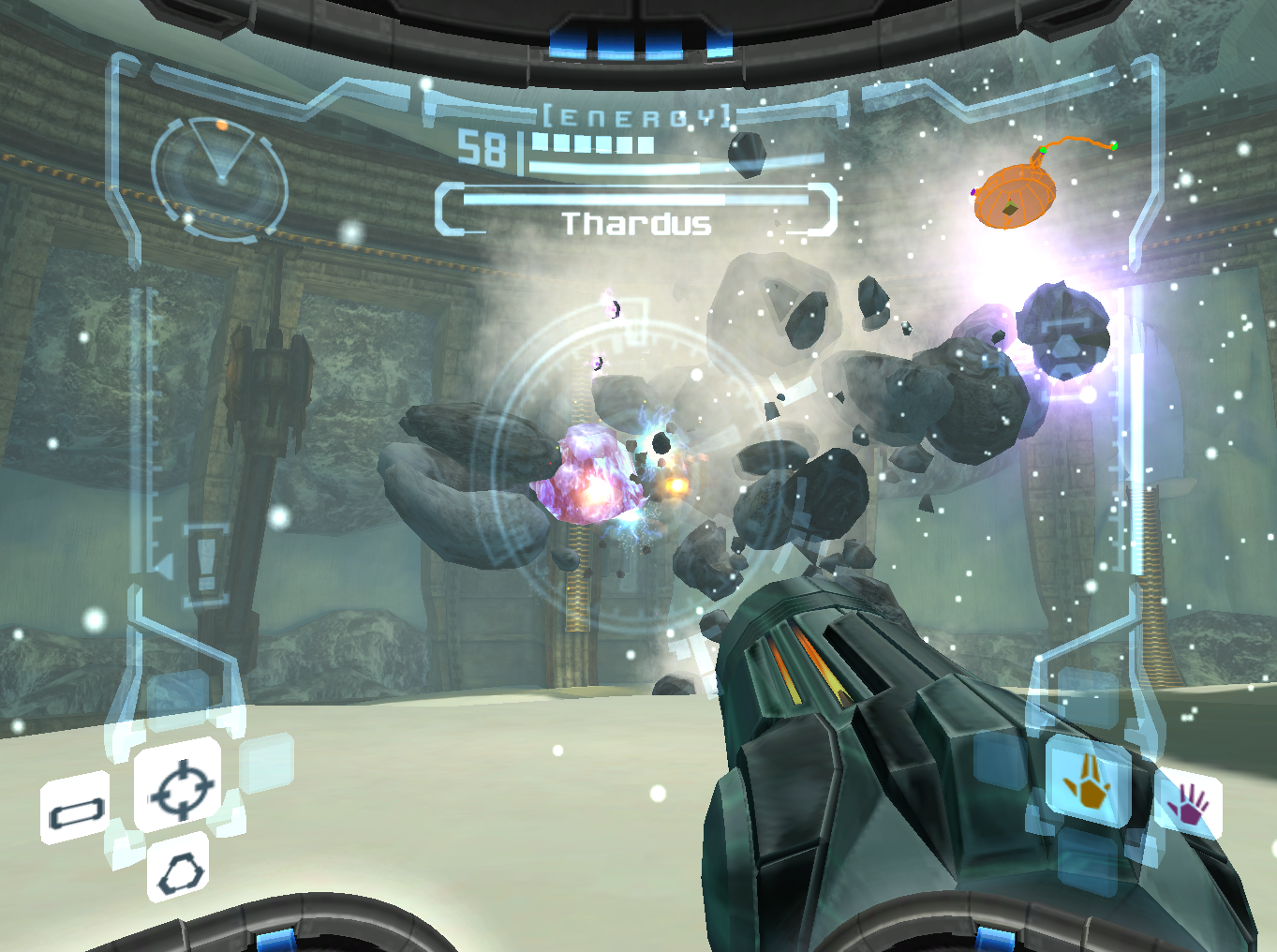
Thardus is somehow even worse. It changes its weak point around its body after you destroy each one, entering a bunch of mini-phases where you have to use the Thermal Visor to spot its weak points, switch back to normal visor once the weak point blows open, and then repeat that several times. Problem being that it will throw destructible homing rocks at you, which explode when they're shot, causing your thermal visor to blind you for a second, so then you gotta wait that many more precious seconds for your visor to calm down before you can see what Thardus is doing again.
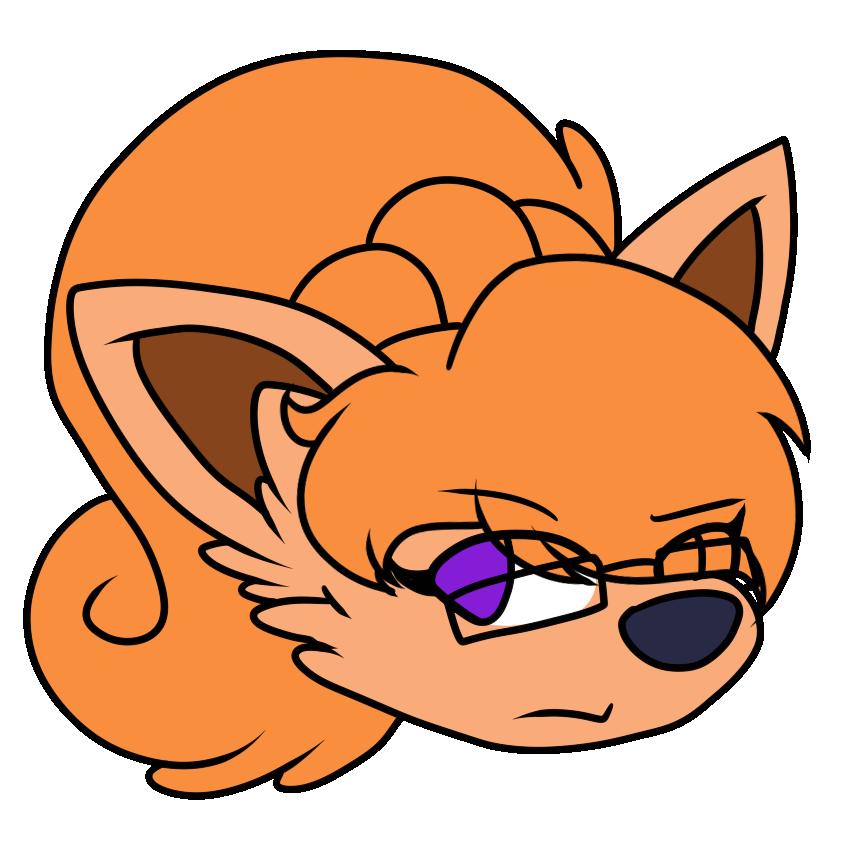 VIXI:
VIXI:
And the most baffling thing is that part-way through the fight, Thardus starts throwing a temper tantrum where it will be invincible for about 20 seconds while it just does an animation of it entering the next phase. (Which is the same as the first phase, just was a thick mist over the field.) And then it does this a second time just before the fight ends for some reason. So that's 40 seconds of a boss fight where you're just standing there and can't do anything to it while it's just trying and failing to menace me. Perplexing.
-------------------------------------------------------

Omega Pirate is at least a little better in that fighting it is a lot more active, but it is a fight where you have to blow off its armor first before you can actually do damage to its real health bar. Fair enough, but it takes a while to blow these bits of armor off, and it's absorbing your shots so long as it itself isn't actively attacking, which makes you just have to wait on it to make a move. That and of course, it throws waves of those Elemental Pirate Troopers at you to distract you, which isn't bad on its own, except for the fact that they can all be different colors and therefore all take a different amount of time to take down, precious time you could be using to deal damage to Omega Pirate itself. It's less bad because at least it's got something happening, unlike Thardus, but it's still an exercise in feeling like the game is just deciding your pace for you.
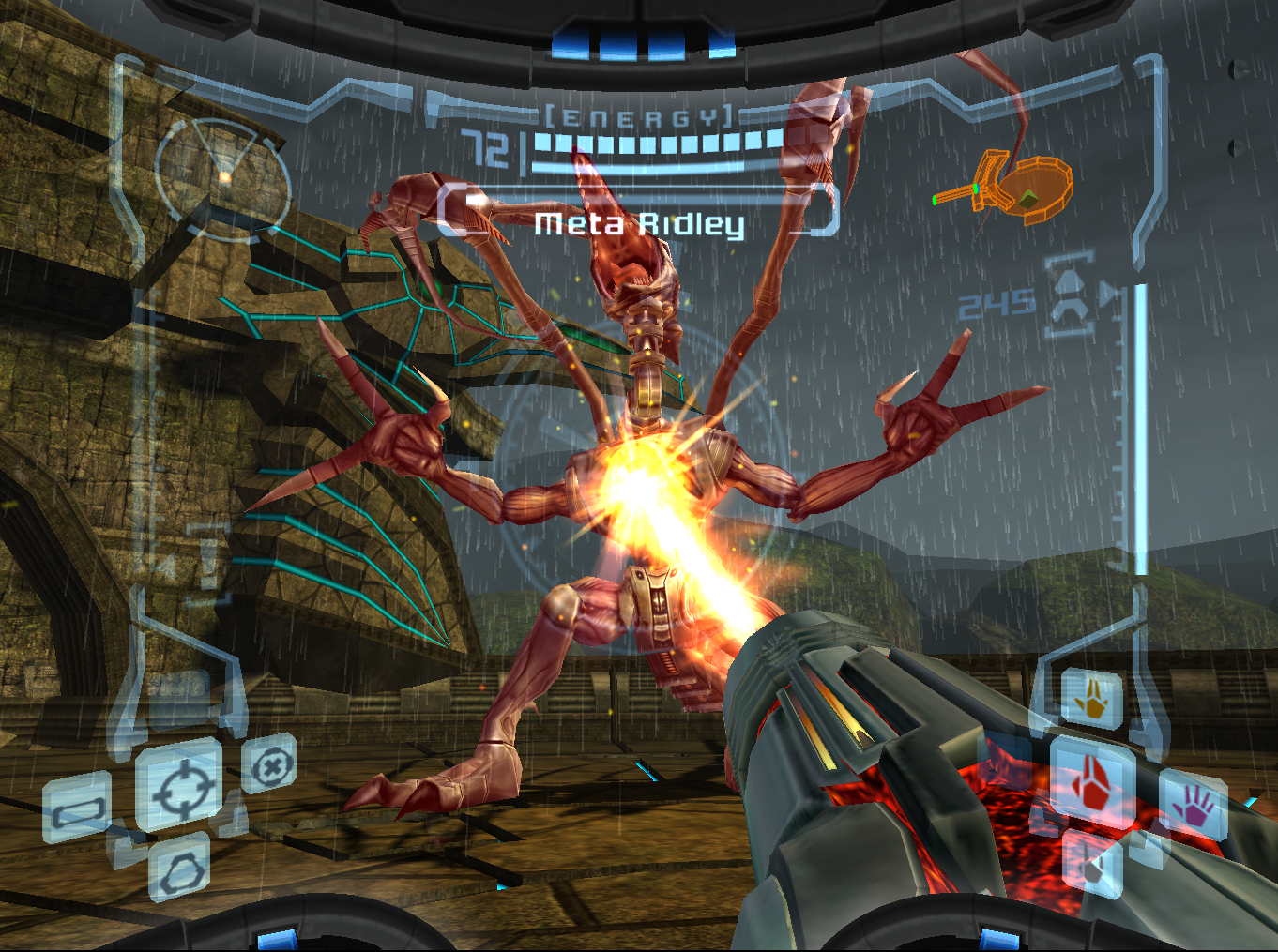
Despite the cybernetic enhancements, Meta Ridley doesn't put up much of a fight, mainly having laser beam breath and missiles along with tail and claw swipes to fight you with. The setup of the fight at the Impact Crater temple is cool, but charged Plasma Beam shots just stunlock the poor guy and make him a bit of a joke. Then for the second phase where his wings break, he can either charge at you or scream, the latter being the only action that makes him vulnerable. And as far as I'm aware, which one he does is completely random, so he can just be doing the same heavily telegraphed charge attack over and over again, not letting you do much.

The final boss, the titular Metroid Prime, is finally a decent fight without any glaring points that make it too boring. Saved the best for last, I guess! It'll swap its color around, dictating which weapon it's vulnerable to, forcing you to change your strategy a bit more dynamically rather than purely relying on whatever weapon deals the most damage because why wouldn't you do that. But it also juggles different modifiers on its attacks as it palette swaps itself, which can get hectic as it enters the later phases where it can change its color on a whim more. That's more of what this game needed for boss fights! This is a lot more dynamic and less rigidly waiting on a boss to reveal its fuck-me-up button.
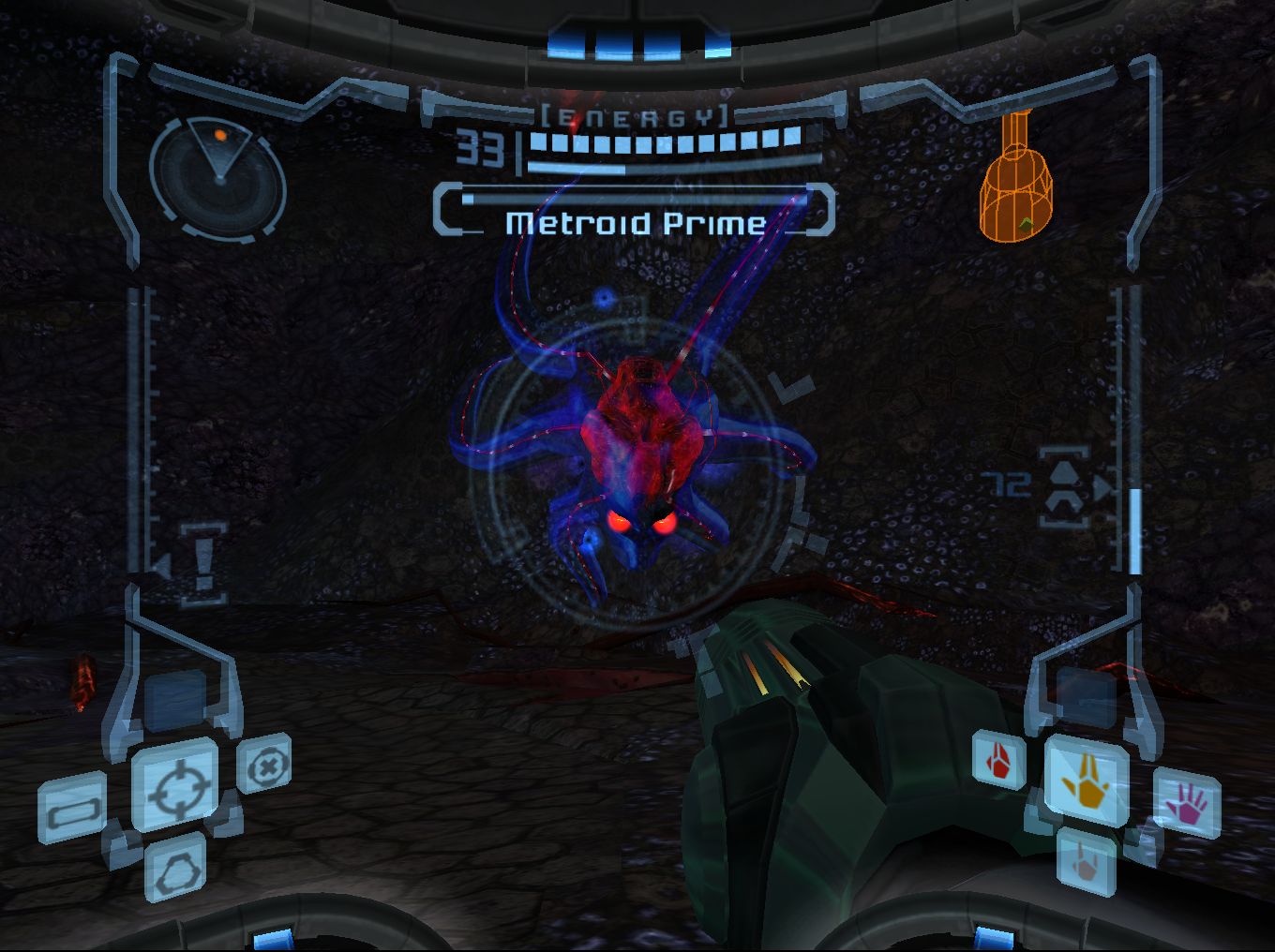
So it feels a little silly when, then, this game ends on a bit of a wet fart of a final phase, where Essence of Metroid Prime will just. Float around, turn invisible, and unleash shockwave attacks, and that's it. You'll be waiting on it to create a pool of Phazon to stand in, which then unlocks this game's version of the Hyper Beam, where you can then unload it onto Metroid Prime, repeat until dead. Whomp whomp.
 JINX:
JINX:
it's just strange, because it feels like a victory lap final phase, except it's not like this fight is a grueling gauntlet or anything. still a non-zero amount of time, because this is a boss fight in metroid prime, but it's still not crazy long.
-------------------------------------------------------
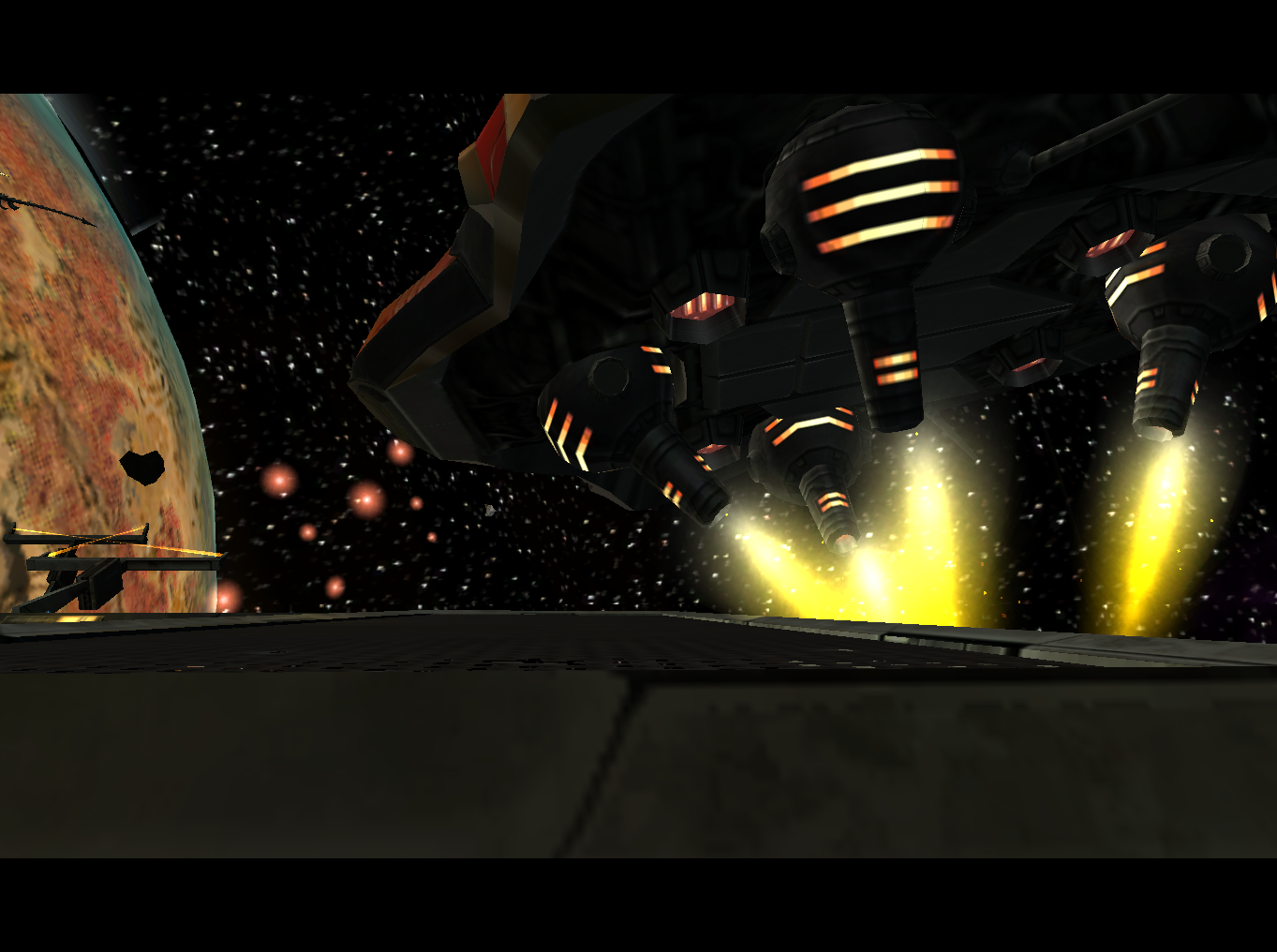
All that's really left to discuss for this game is the story and I don't have a super smooth segway into that, so blunt force topic change it is. We already brought up the game's story a bit, because it was relevant to the Scan Visor, but as far as this game goes, it's both just as minimal as Metroid has been to the point, but also more fleshed-out than Metroid's ever been before. So somewhere inbetween, I guess. According to Nintendo and Retro, the entirety of the Prime saga takes place between the original Metroid and Metroid 2. Which feels like an odd place to put it, since you would think the events of Metroid 2 kicked off as a reaction to what happened in Metroid 1, but I guess it'd be odd no matter where you stuck it. But this is getting into talk I almost feel like is worth its own intermission article.
As I already stated, what's actually happening within Prime isn't anything outrageous. But a lot of the background details from scan logs is where a lot of the context is provided. From Samus' pure point of view, she just arrived to a Pirate distress signal to mess things up even more for them, discover a cybernetically enhanced Ridley, and then chase him to the surface of the planet, basically setting out to find the Space Pirate operations on this planet and kick their asses about whatever it is that they're doing.

She goes to the Chozo Ruins, which houses a majority of the Chozo murals that contain their lore logs, talking about how they arrived on this planet with the goal of separating themselves from the technology Chozo society at large has become so reliant on. And so, these space hippies built what are now the Chozo Ruins as a big city with hopes to just survive by lay of the land. This all goes south by about 20 years before the game's present day, when a meteor strikes the planet, leaving a massive crater and said meteor is apparently leaking some mysterious poisonous substance, referring to it as simply "The Great Poison".
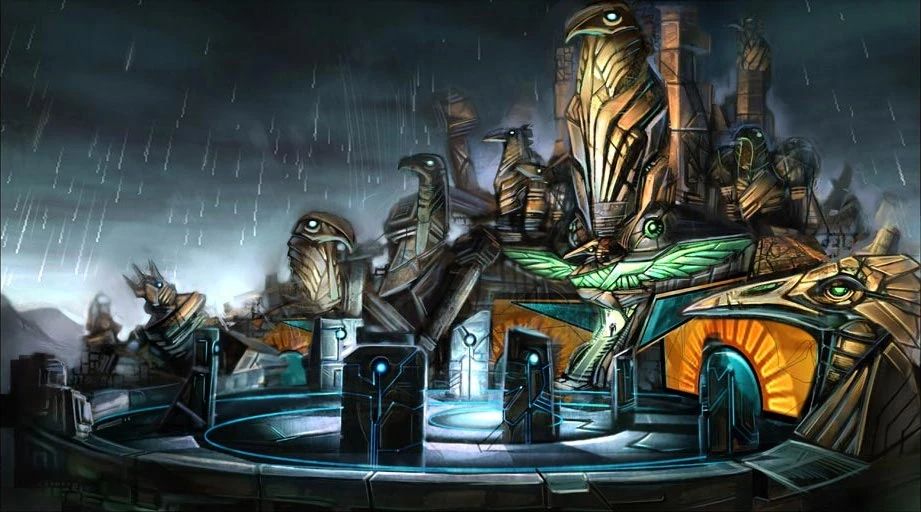
Many of the lore logs from there tell variations on how, through their religiosity giving them clairvoyance, they see that long after they're dead, a savior will come along and rescue the planet from a slow death. But in order to keep this Great Poison at bay, they build the Impact Crater temple, what they call "The Cradle", which emits a barrier around the crater in order to prevent the spread. That said, by the time they manage to build this, it's too late for them, and they all agree to essentially become force ghosts and leave the physical realm. But also somehow, this poison is so potent that it's breaking the psyche of even these ghosts, which is why they still attack even Samus on sight.
In order to keep the force field locked until Samus gets grown up and gets to Tallon IV, they locked it with twelve keys and hid them around the world. This will be extremely relevant in a sec.
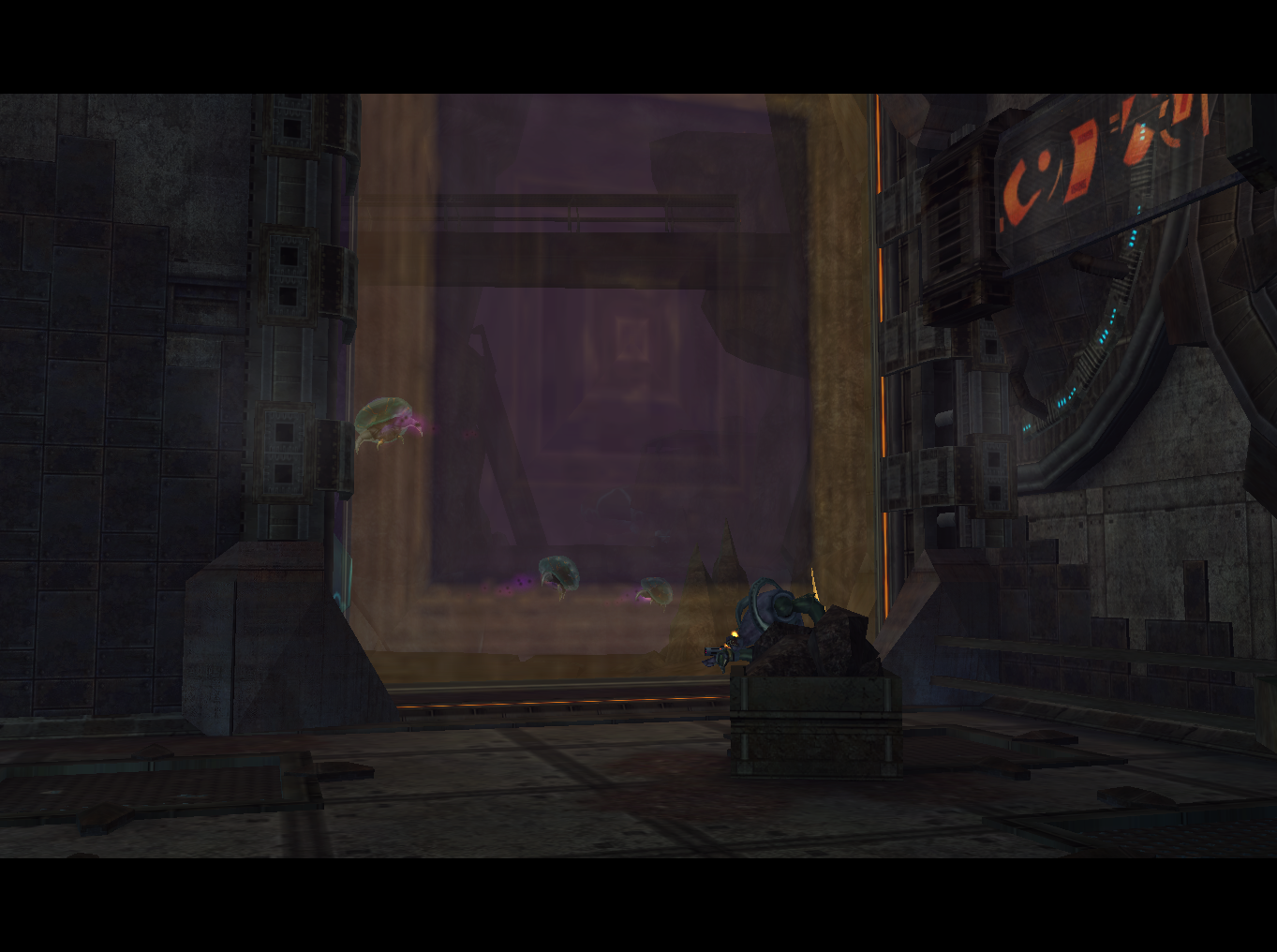
Meanwhile, the Space Pirates also arrived on this planet, some time after the Chozo all collectively moved on to the afterlife, as they only ever talk about their ruins and the ghosts of the Chozo. So I think it's implied some of the Chozo lore murals are written by the ghosts? Because They also acknowledge the Space Pirates here and there. Anyway, the Space Pirates find some cool blue stuff that's super radioactive and rapidly mutates living beings, so as you'd imagine, their bioweapon-loving asses are ecstatic about this news. Finally, this blue stuff comes to be known as "Phazon".
The Space Pirates find a sweet spot of Phazon that was outside The Cradle's containment field, though they definitely still want to get into that crater because if there's this much Phazon outside the field, imagine how much is inside it, so they are out there also looking for those twelve keys. Along their mining operations, they encounter some bizarre, highly mutated Metroid that they then dub "Metroid Prime" (yooo they said the thing) and start experimenting on it, giving it weapons because that's a smart idea to these guys. Though it eventually escapes and returns to the Impact Crater so it can go be the final boss.
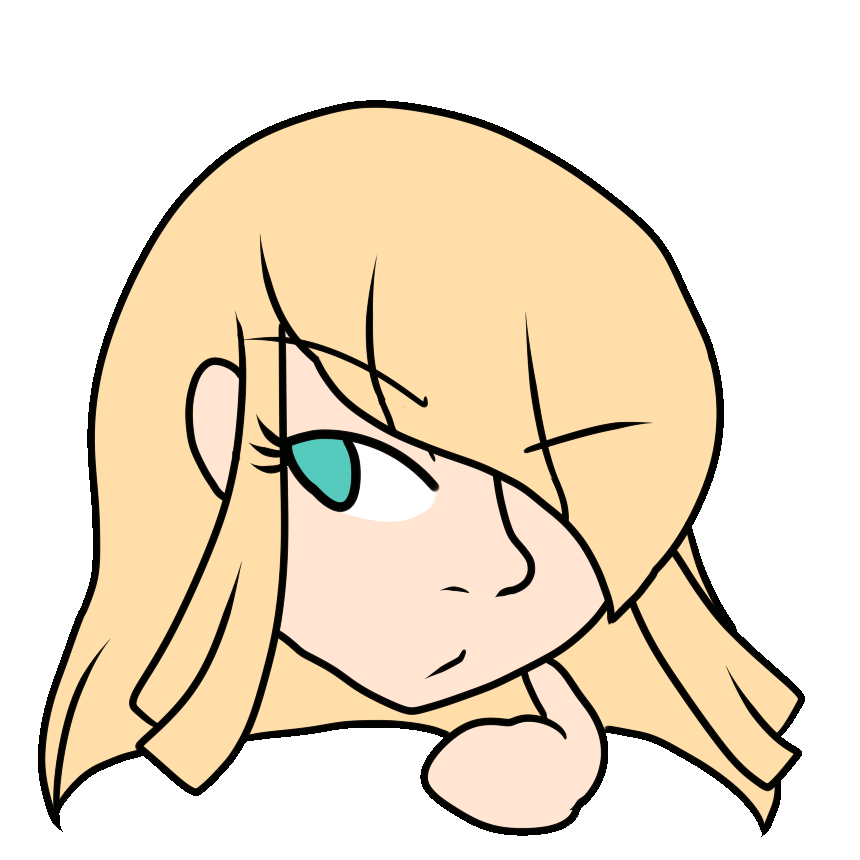 CELESTE:
CELESTE:
The bizarre thing about this, though, is that part of the reason the Chozo built the Cradle in the first place is to keep a creature they call "The Worm" inside it. "The Worm" very clearly being the Chozo name for Metroid Prime. So how the heck did it end up outside of the containment field only to crawl BACK into it? It's. A bizarre little hole in the plot. Unless like. They are actually referring to the meteor itself as "The Worm", for reason that would make at least some sense if you've played Prime 3 already, but it feels a lot more obvious that Metroid Prime is what they're referring to here.
-------------------------------------------------------
Plot holes aside, Samus busts her way through the three major zones of the game, eventually landing herself the Phazon Suit and all possible upgrades she could need, ready to fight the final boss. Except you can't go fight the final boss yet, actually. Because as it turns out, what you need is those twelve keys in order to unlock the Cradle in the first place. Around the world are twelve "Chozo Artifacts" hidden in obscure little corners, which sounds like a daunting task if what you were prepared for was the home stretch. And indeed, especially on a blind playthrough, it can feel a little blueballing to get all the way to the end only to be told to go on a scavenger hunt.
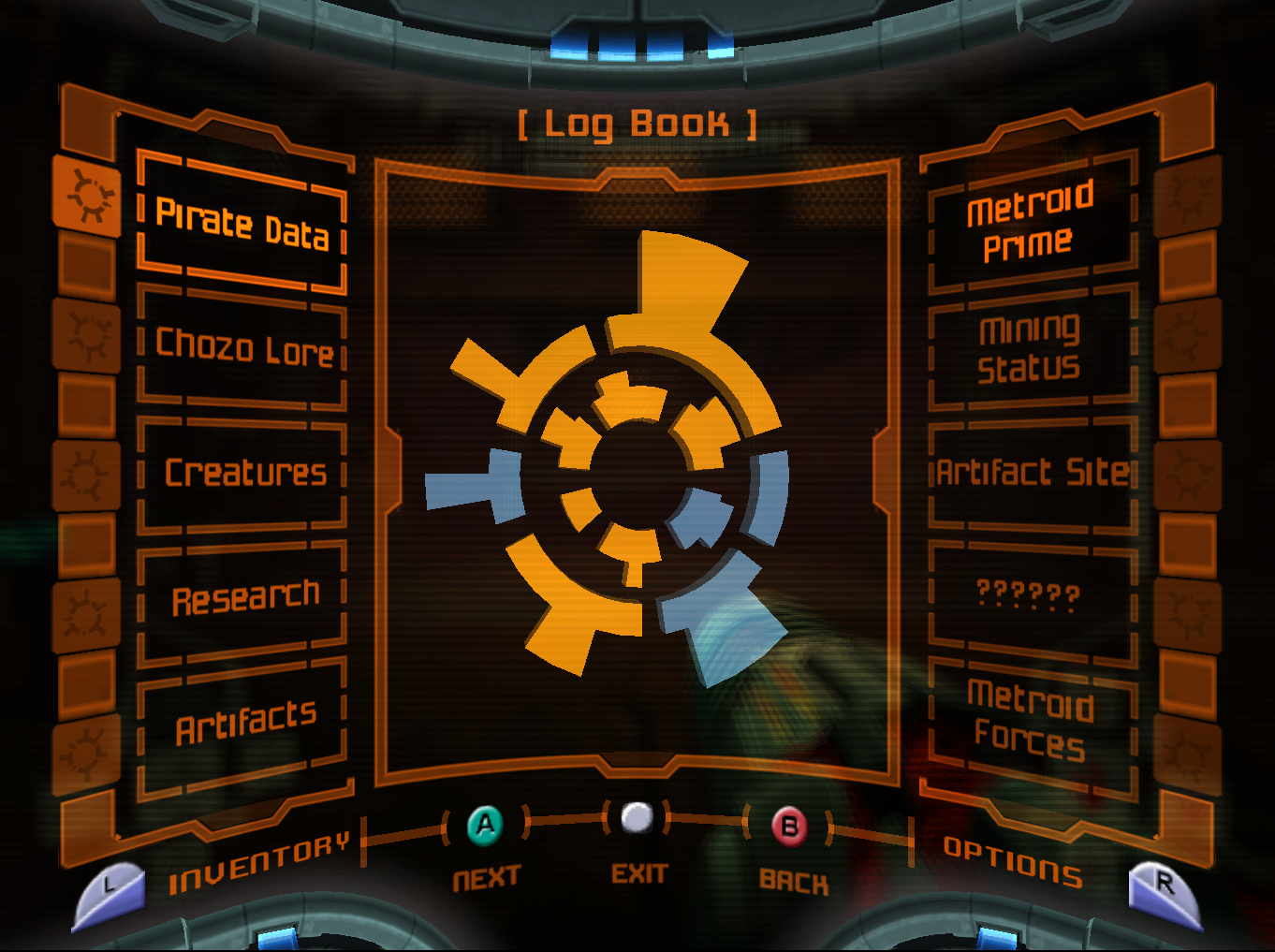
Thankfully, there's a couple things working in your favor here. For one, you can scan the pillars to receive hints on the locations of the eleven artifacts that are out on the field. And I think it can be satisfying in its own right to essentially get told to go on one more tour of the world now that you have every door-unlocking ability in the game and pick up any collectibles you missed while you're hunting for these artifacts anyway.
Plus, you can also grab these artifacts much earlier than right at the very end; you can come to the Cradle as early as getting Missiles, and the first Artifact becomes available as early as getting the Space Jump, which is a little under the halfway point of the game anyways, so you'll have plenty of time to collect them as you go. I managed to grab all but four as of beating the Omega Pirate, and one of those can be grabbed as you're climbing back out of Phazon Mines, just leaving two that were leftover from Phendrana Drifts, which I probably could've detoured from after getting Plasma Beam to grab those real quick, since Plasma and X-Ray visor is all you need for them. Plus one in Chozo Ruins that also required Plasma Beam that could PROBABLY be detoured into on your way back to the Cradle anyway. So in theory, it is decently easy to have extremely minimal backtracking if you're willing to just get it out of the way early.
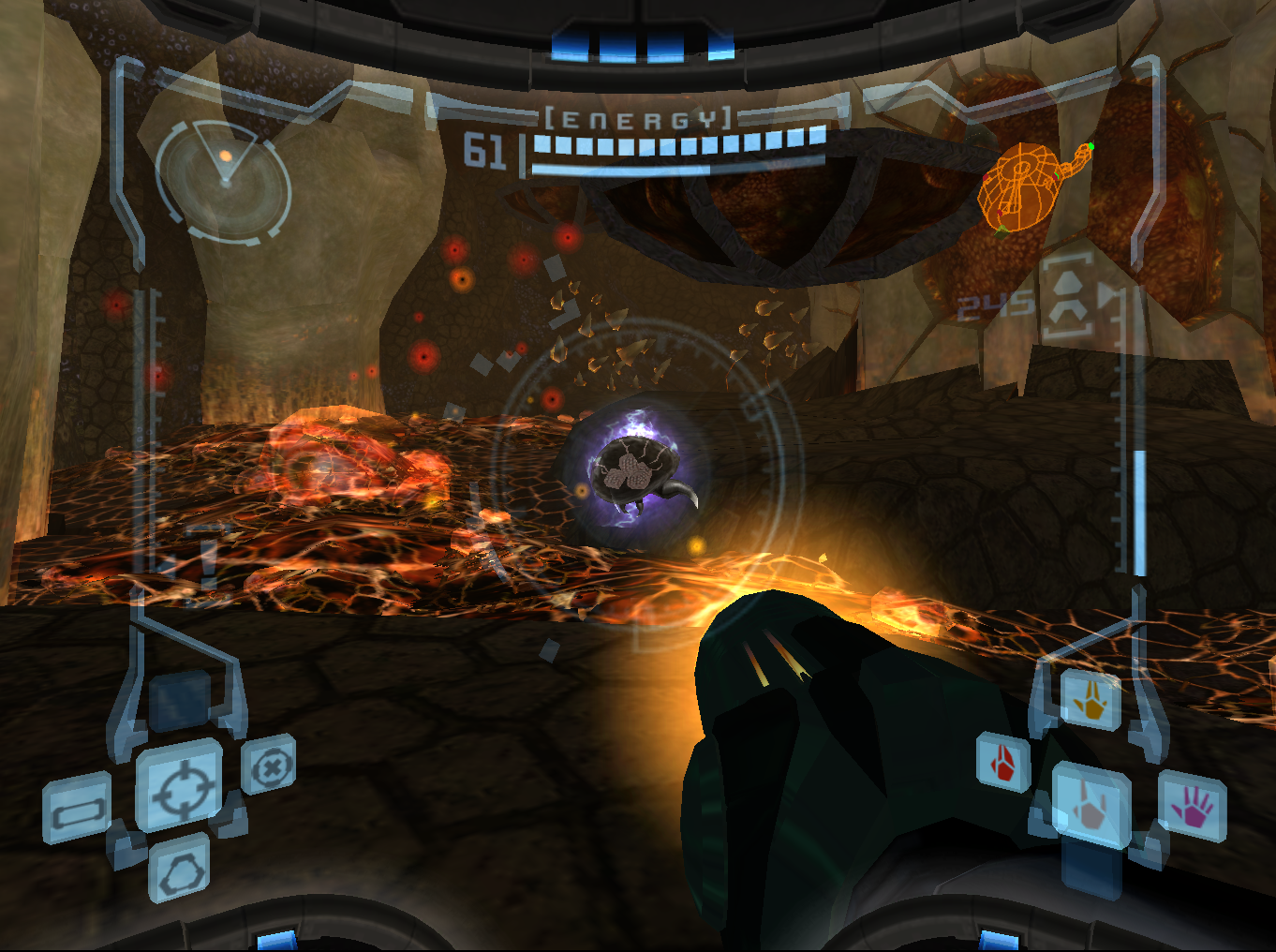
Finally, Ridley wrecks house, Samus kicks his ass, and the Chozo Ghosts allow you to enter the Impact Crater, the Tourian of the game. Complete with brand new special Metroid type to be annoyed with, because they're hard to kill and just keep spawning forever on the way up a long climb. Curiously, this game features a special, orange type of Phazon that is even more potent than the blue kind, even being able to damage you in the Phazon Suit. So, a lot good that thing's doing. Though, I SUPPOOOOOSE in theory, the game does point out that unprotected organisms just die in seconds when they come in contact with the stuff, so yay.
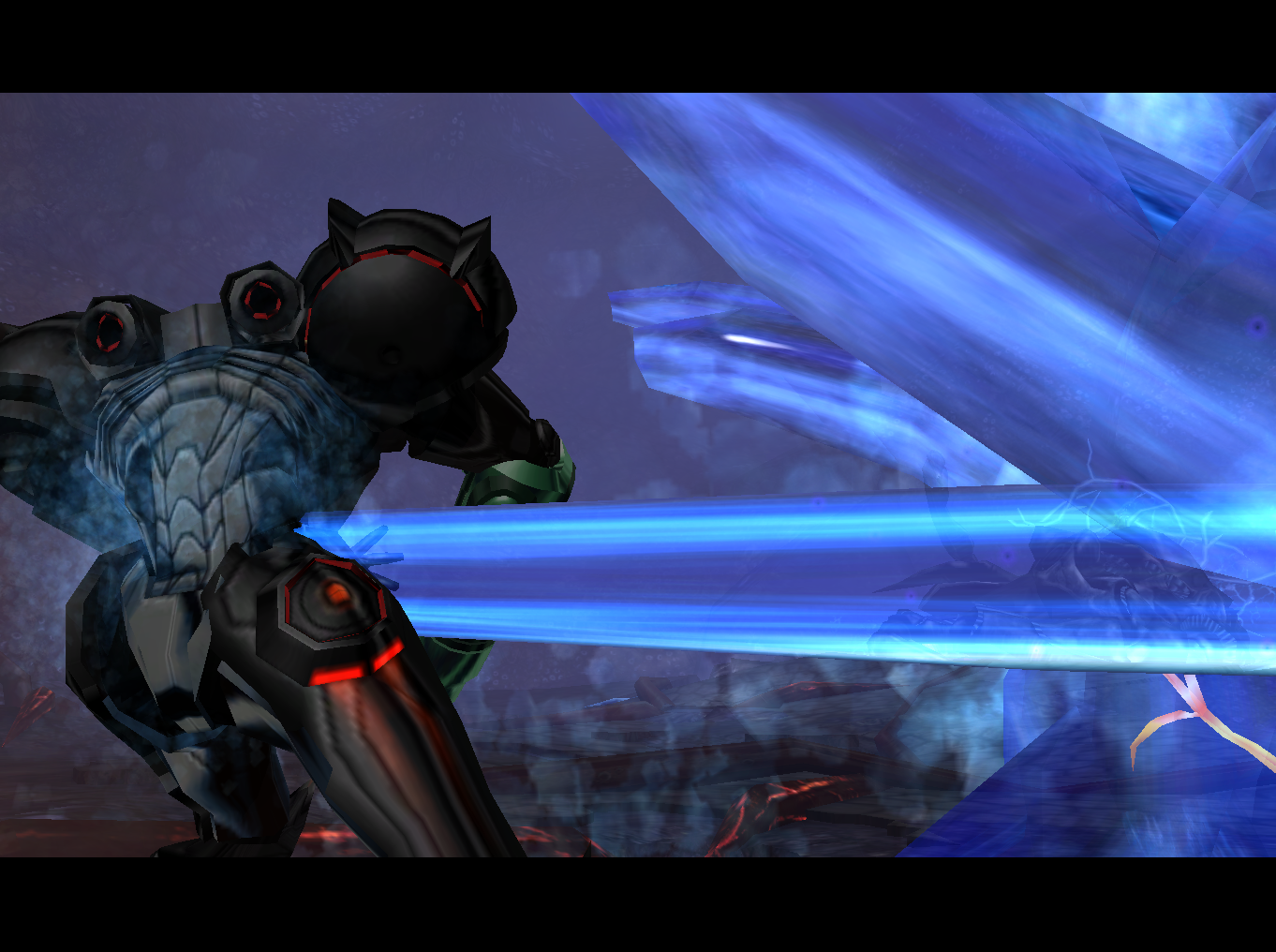
You climb your way in, have your final fight with the titular guy, and it turns into some strange amoeba form that then grabs Samus, somehow tearing off her Phazon Suit, leaving her with the Gravity Suit alone. You would think the ensuing explosion would be your cue to get out of the Impact Crater before it explodes, but all that just happens offscreen after a fade to black.
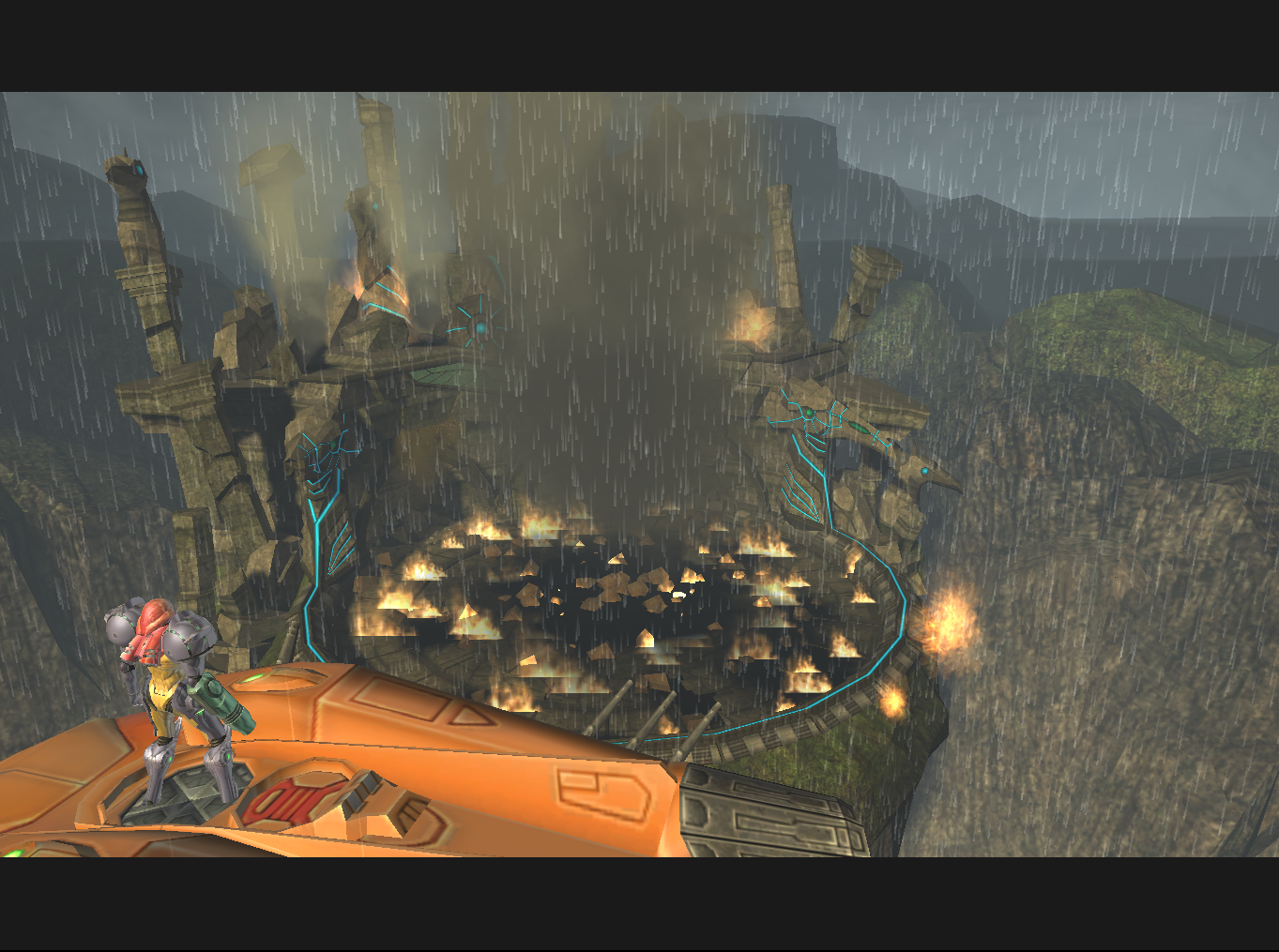
Samus gets out, looks forlornly at the mess she made, and then leaves. The Space Pirates are still kicking, and an invasive species in the Metroids are bumming about still, but hey, the main threat is defeated, enough to call it a mission done, right? And indeed, had you collected 99% of items or less, that would be it.
But oh hey, 100% completion endings were on vogue at the time, so Metroid Prime decides it's going to have one, too. But all you get is a pile of Phazon festering in the arena you fought Metroid Prime in, only for the arm of your old Phazon suit to emerge from it with an ominous eye on it. Huh. Wonder if that's gonna come back at all.
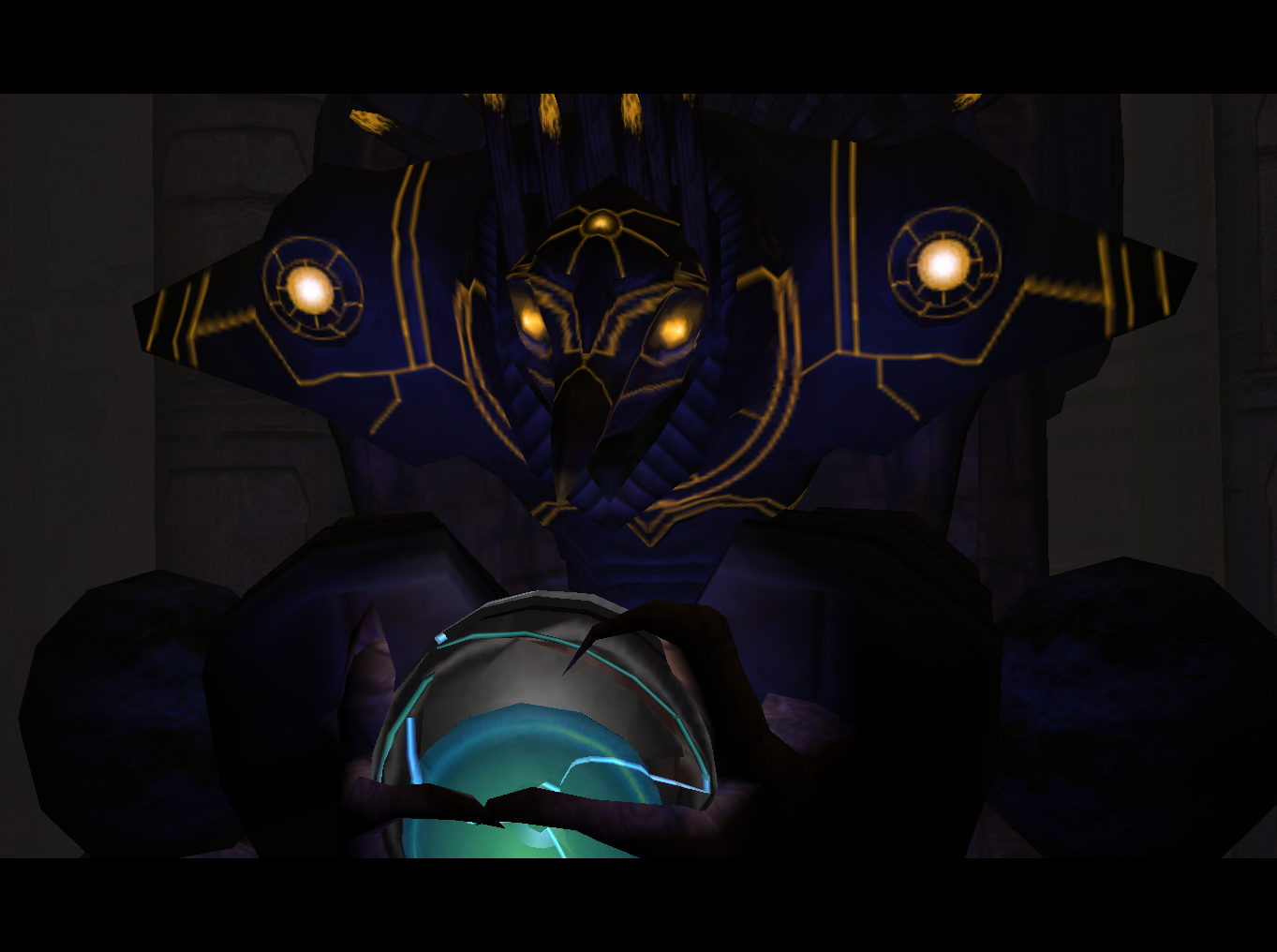
Metroid Prime has its fair share of problems and hit points, particularly in how slow and non-threatening the boss fights feel, how easy the game is most of the time, and it feeling a bit basic at times; again, this thing's mission statement was to be 3D Super Metroid, in spirit. And to that, I would say it easily most succeeds in the way Metroid Prime is its own thing and moves away from what the 2D Metroids aim at doing, which, especially as the 2D Metroids go forward, is gonna evolve to be more about fast-paced twitch action with games short enough that you can beat them in just a few hours if you're good enough. Prime does well in being a bit more slow and methodical, even if I think that slowness comes back to bite it a little here and there.
It is still quite a hell of a first-ever attempt at trying to translate Metroid to 3D, and doing it this well is very commendable. A bit of a cracked gem, only really held back by a lot of teeny, tiny flaws that combine into one mildly unsightly blemish, but it's overall hard to deny why this is often regarded as one of the best Metroid games out there.
-------------------------------------------------------
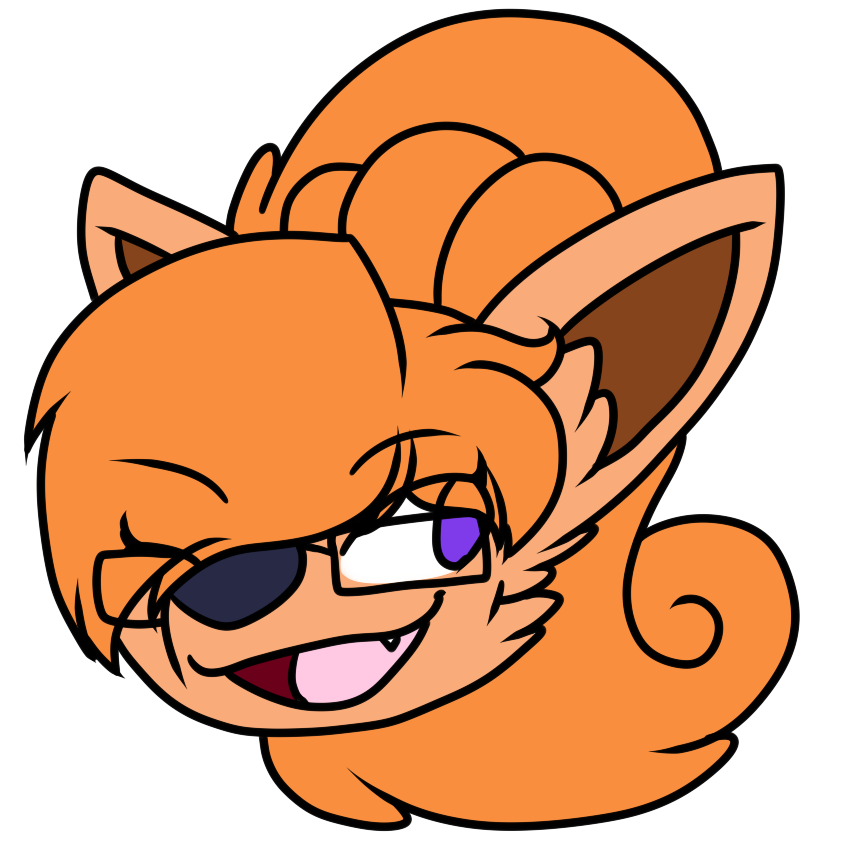 VIXI SCORE: 9/10
VIXI SCORE: 9/10
It's so close to being perfect to me. I still hold it to a very high regard, obviously, just yeah. I played the sequel first, and it didn't QUITE have the SAME impact, but it still very much left an impact regardless.
 LUNA SCORE: 9.5/10
LUNA SCORE: 9.5/10
Very fun, and it's come around to be a bit of a chill game for me. Though... maybe that's not the intended effect. Hey, if Vixi's mom's boyfriend can fall asleep to Alien, I can have this be a wind-down game.
 JINX SCORE: 8/10
JINX SCORE: 8/10
had we still never played super metroid, this score might be higher, but i do definitely feel like it lessens this game's impact ever so slightly to know it's liberally lifting from super's shtick a lot. still though, it wears super's clothes decently well.
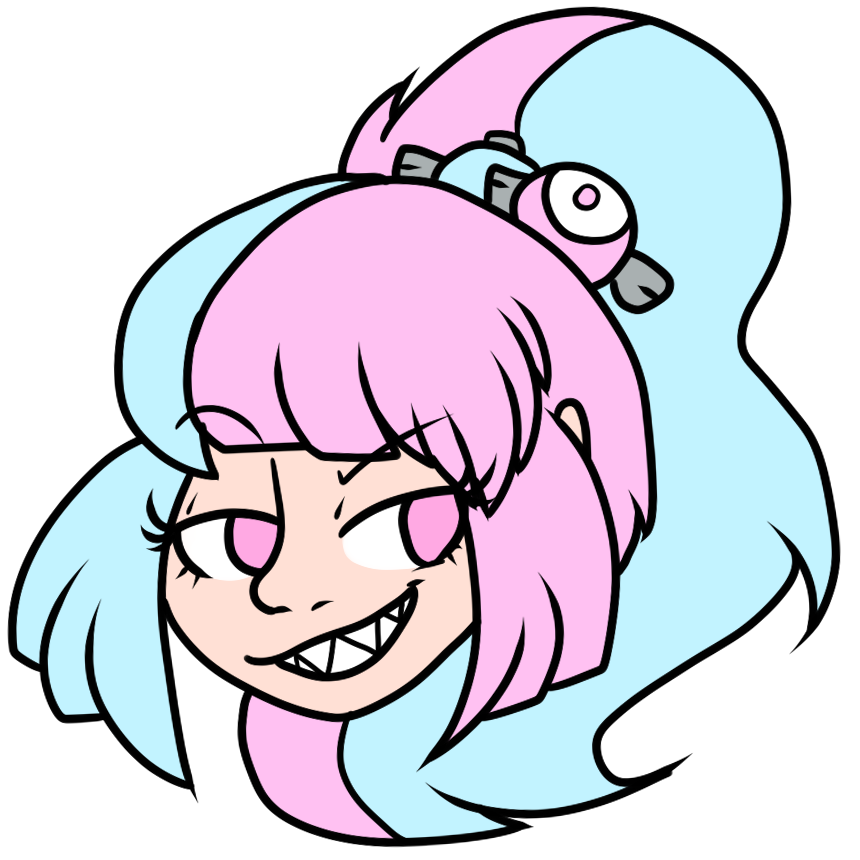 IONO SCORE: 8.5/10
IONO SCORE: 8.5/10
It's really cool! Just yeah, any time it tries to peak it just kind of. Plateaus, instead. The boss fights aim for big and exciting but they feel a bit nothing. Still really cool though, dig how spooky it is.
 CELESTE SCORE: 9/10
CELESTE SCORE: 9/10
I overall enjoyed it a lot! I appreciate how clean and well thought-out the map is, trying to utilize it to the best of your ability to shave it down past a certain hour threshold. Didn't quite make it this playthrough. Maybe next time.
 CHIAKI SCORE: 9/10
CHIAKI SCORE: 9/10
A whole lot of fun. Not quite masterpiece status, but it does go pretty hard in its own right. Definitely a crowning achievement in the atmosphere department, so far for the Metroid series. Though I get the feeling a game coming up soon is gonna top it...
OVERALL SCORE: 53/60

Coming up next on The Last Metroid: we're going back to the 2D games to see the rest of what they'll be up to for the 2000s.